hi! thanks for visiting! my name is sinan, and i have a pretty insane summer travel itinerary set out for 2017. join me as try to make sense of midcentury modernism in the west coast of the united states and get lost in japan and iceland while researching mushroom cultivation! as always, please reach out if you'd like to talk at www.sinangoral.com.
Don't wanna be here? Send us removal request.
Photo
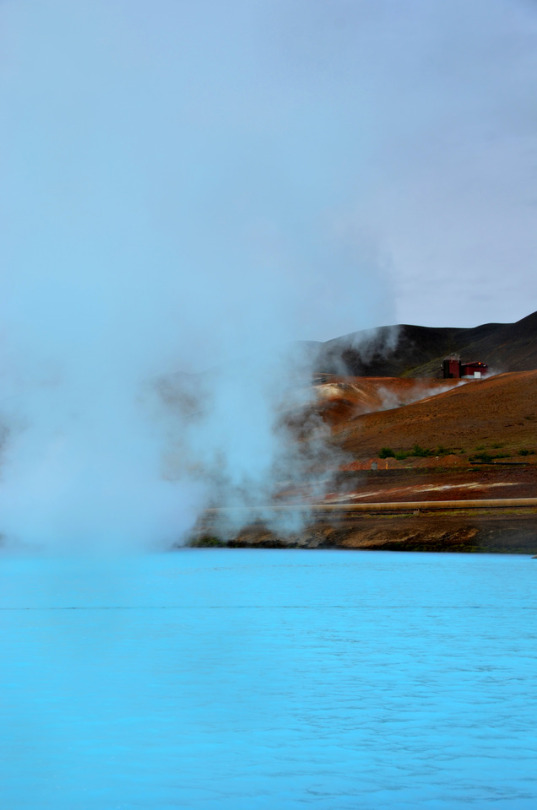



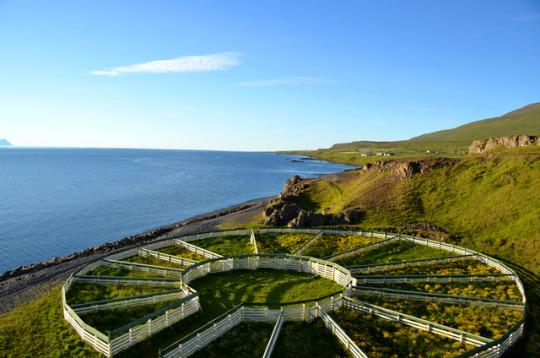

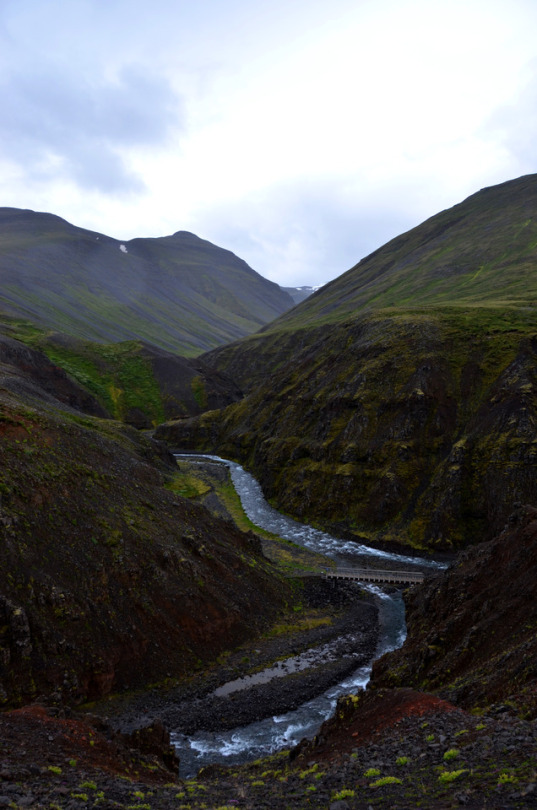
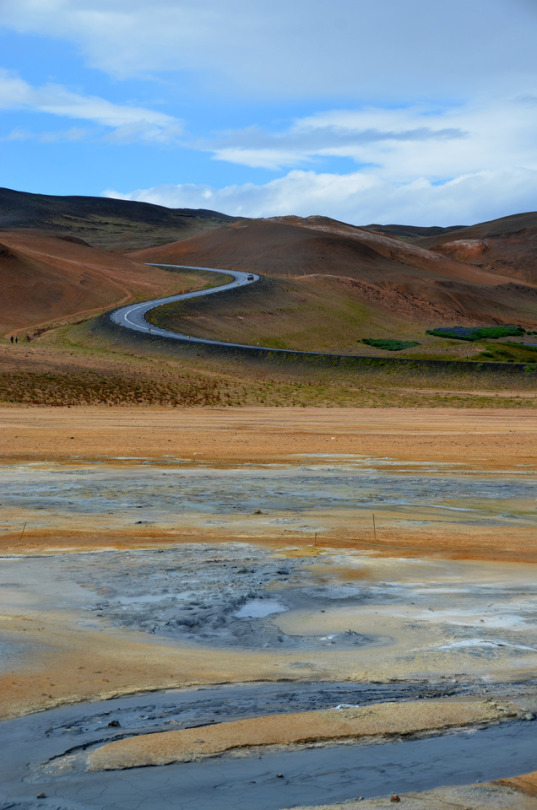
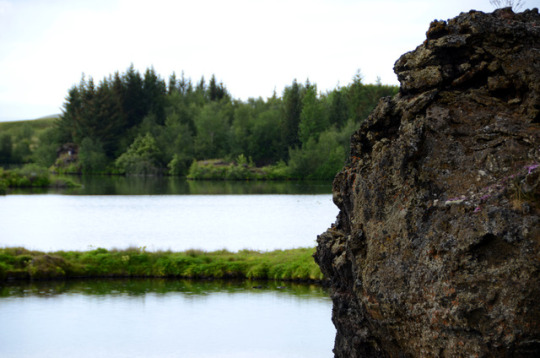

[07.29.17] i recognize that i am ridiculously behind on writing this post, so for those of you who have still been keeping along, i am very sorry! i can explain! let’s rewind.
the in-limbo period of time that i had in between japan and iceland was chaotic, to say the least. consumed with fixing things around the house (our ac broke so i had to readjust the fan unit outside), visiting mom at work, and gearing up for iceland, i got really busy. i was always hoping to write about my downtime in minnesota because, after all, it would’ve been one of the highlights of the summer (I LOVE MINNESOTA). ultimately, i just never had the chance.
in either case, wifi in iceland turned out to be far more limited than i had originally predicted. since i slept in my car most of the nights (more on that later), the only wifi i had access to was when i was filling up at a gas station. even those connections were weak, so the prospect of uploading any text entries, let alone photographs, were minimal. i was sad to admit to myself that the trip couldn’t be shared with you all as i lived it. instead, it had to be relayed after the fact upon my return to the states.
now that things have calmed down a bit and i’m living a slow and sleepy minnesota life, i can take some time to update you and share with you some of the trip’s highlights. though it’s pretty difficult to walk you through 11 days in iceland in one post, i’ll try to do my best.
it makes sense to start with the disappointing email i received from a mycology professor upon taxiing to my gate in iceland, saying that he had decided to take a last minute vacation and couldn’t meet up with me. understandably, these sorts of things happen, but i was pretty bummed that one of my connections had to back out. luckily, my other connections (who were a married couple at the iceland academy of the arts) and i were to meet towards the end of my trip, so in a matter of minutes, i was a free bird with no agenda. as such, i landed in iceland with a certain restlessness that, for some reason, urged me to just hit the road as quickly as i could.
my shuttle bus from the airport to my rental car location was 6 hours late, so i had to bum around the airport. i know – first world problems – but with that agitation that was boiling inside of me to just get rolling, i started to go nuts. nonetheless, several hours later, a sweetheart girl, who couldn’t be more than 19 years old, picked me up. she insisted on carrying my duffel bag and backpack. i could tell that she could tell that i felt a little weird about it. seemingly reciting a speech that she likely gave to many idiotic american males before me, she explained to me how iceland is one of the most feminist, forward-looking, and optimistic countries. as we drove off in the 14 passenger van and she slam-shifted the burly van’s gear shift, i couldn’t help but notice that she was enjoying my slight surprise.
well, i picked up my rental car (a five-speed fiat panda that was a joke compared to my female friend’s bus), bought a map, and hit the road, traveling north towards reykjavik. the only plan i had decided on was to drive through reykjavik and ignore the city, promising myself that i’d spend ample time there upon my return. and so, i kept driving north on the ring road (highway number 1), taking my time, stopping every couple of kilometers or so to soak up the scenery. i took about an hour to stop at a “bonus,” which was the equivalent of a small-sized costco, to pick up sandwich meats, bread, and preservable food. i had heard the horror stories about the food prices in iceland, so i made it a goal to live off of my own concoctions for at least the first six days.
since i knew i would be living out of the panda for the majority of my eleven day trip, i made it a goal to compartmentalize the car into different zones. blame it on my architectural brain, or occasional obsession with specificity, but i had to get comfortable in the car.
the front passenger seat was dedicated to brushing my teeth, trimming my beard, making coffee, and changing clothes, while the driver’s seat was for… driving. nothing too weird up in the first half of the panda.
the rear seat was dedicated for sleeping, but only sort of. since my rather large body didn’t fit easily back there, i would sleep on my left side and swing my legs up through the center console and rest them in the passenger seat. when i’d get tired of this position in the middle of the night, i’d switch sides and sleep on my right side. strangely enough, it felt too awkward to let my feet rest in the driver’s seat when i was in this position, but after the third or fourth night, i found it pretty comfortable to hang my foot off the gear lever if i parked the car in first, third, or fifth. the miserable techniques of an aspiring architect.
the rear hatch was dedicated solely to food, as i ate out of a ‘kitchen’ that i built in the trunk of the panda. two cardboard boxes housed all the plastic cutlery, toilet paper, and rolls of paper towels that i had stolen from the airport. after all, i had to do something productive with my 6+ hours, and i had made the mistake of finishing my book on the plane. i kept all my deli meats, cheeses, jelly, and spreads inside high quality ziploc bags inside an equally heavy duty plastic bag, which i hung from the exterior rear windshield wiper of the panda. this way, i could prevent insect buildup. in addition, the weather was pretty cold overall, so i took advantage of the icy rain and cold wind while i drove and slept to naturally refrigerate my food. with the exception of some dirt that entered the bag on the eastern parts of iceland, this technique worked out pretty well for me.
to compliment my weird program divisions inside the panda, i developed a strict routine of eating, resting, refilling fuel, and begging for free hot water for my french press that i had brought along. strangely enough, it was through this chronology that i was able to tell what time of the day it was, since the all-day brightness was so disorienting. all in all, i charted my travels, favorite locations, and quirky experiences on the aforementioned map, notating for myself as many things as i could recall from the day. i’m hoping to pin up this map on my apartment’s wall when i return to pittsburgh.
i’m going to sound stupid if i try to describe what i saw - it was just too beautiful. color was surreal, mostly because the abundant grays made everything else feel so saturated and accented. while i’ll let the photographs speak for themselves (there’s just no way i can try to explain how beautiful iceland’s landscapes actually are), i’ll share with you two existential moments that i had along my travels, which adequately color the trip for what it was. the first involves a bunch of multicolored sheep at 4am, and the second involves a hitchhiker that i met along the road.
after around the fifth night, having a full night’s rest became a great difficulty, and i started to have lucid dreams as i fell in and out of sleep. this particular night, i woke up to find that what i had thought was an ingenious plan to hang black tshirts from my rollup windows to block sunlight was actually a horrible decision. a zillion mosquitos were in my car. not 10, not 100. a bagilion. just like the horror movies. i had idiotically parked near a marsh/swamp for the night, and all the stupid insects had crawled through the gaps in the windows. here’s an excerpt from an email i wrote to an important friend about the event, which adequately captures my inner turmoil:
despite the success of this leg of the trip with camping inside the car, last night was a disaster. i woke up to ten thousand mosquitoes inside the panda at 445a because i'm an idiot and fool and i left the windows open because i'm an idiot and fool. i knew nothing else than to drive like a madman with windows down for two hours to get rid of them, eventually ending up in little town. weather is overwhelmingly foggy and don’t want to drive because it's a bit unsafe. i can't see these ****ing suicidal sheep that come out of god's **s onto the road and baaaaaa and bleep around. and the farmers spray paint their butts to know whose is whose so i just see these little pink and blue and red butts galloping towards and away from me through the fog. it's slightly poetic but also so maddening. and i guess, at this point, i break down, knowing that this hell is sent from the gods and that they're rightfully directed at me. ***k ***k ***k stupid sheep ***k.
i don’t think i can look at sheep in the same way, to be honest.
several days later, on a random impulse, i decided to pickup a hitchhiker that i found just outside of hella, iceland. jeanne, who turned out to be a total sweetheart, was french-canadian. we stuck together for the whole day, visited a couple of waterfalls, and talked about the weirdest stuff. later, we stopped by the side of the road and pet some random horses. wouldn’t you? it’s amazing how comfortable you can get with someone you don’t know and know you likely won’t see again, simply in light of the fact that you are both blank slates to each other. you have nothing to lose. so those several hours we spent together were really nice.
my time with jeanne also made me realize how lonely a solo traveler can feel in iceland. again – first world problems – but a reality for me, nonetheless. iceland, no matter how grateful i was for the experience, should’ve been absorbed with someone else, at the very least. it was just too beautiful and esoteric to have been lived through alone. i find that relaying my experiences with my mom and minnesota friends has become quite difficult, because the picturesque scenery i’m trying to depict seem exaggerated. and as cathartic and uplifting as iceland was for my health, i wish i had shared that with someone else as well.
when i finally finished the long loop around iceland, i had three to four days to soak up reykjavik, so i checked in at the cheapest hostel i could find and explored the city by foot. i had great beer, good grocery-store food, and occasional splurges on drip coffee. it was during this time that the married couple i was scheduled to meet informed me of a sudden family emergency – one which forced them to fly out of the country last minute.
this brings me to the guilt that i felt about missing out on my mycology connections in iceland, despite how much it was out of my control. i keep asking myself: what if i had planned for just one more resource? was three really enough? of course, i know that these things happen, and that i should learn from this, but an underlying sense of embarrassment still resides. originally, i had hoped to visit japan and iceland to soak up 50% of research and knowledge from both, but i’m now realizing how naïve that was. iceland, in the end, turned out to compliment japan as a therapeutic release from my everyday worries – something that arguably is extremely important, especially as i delve into my fifth and final year of school – but also something which admittedly steers away from the original thesis-based proposal i had put forward to carnegie mellon.
i was lucky enough to fly through boston, both on my way to and from iceland, and see several important people in my life. i stayed with nick, who was my best friend and roommate at grinnell college before i transferred. though i wasn’t able to see the wonderful temple rea, i got to annoy his awesome sister, walton, for an afternoon. i even got to see the handsome and well-dressed kyle wing in the city, which was a blast. the rest of my time was spent soaking up the boston public library, perusing random bookstores, and gawking at MIT’s media lab and campus. ultimately, boston was a wonderful reprise for me as i get ready to return to pittsburgh.
i have spend quite some time wondering if i should keep this blog going or not. i likely will for thesis, but i’m not sure if i’ll start a new one or just continue on this platform. more on that after i talk with my advisers on the matter. i think i need a springboard for thoughts, i just don’t know if i should start over or not.
nonetheless, i’m so incredibly grateful for the opportunities i’ve had throughout this summer to travel, learn, and live. i still cannot believe how this fantasy became a reality, so to my donors, department, university, and mom’s patience, thank you.
1 note
·
View note
Photo
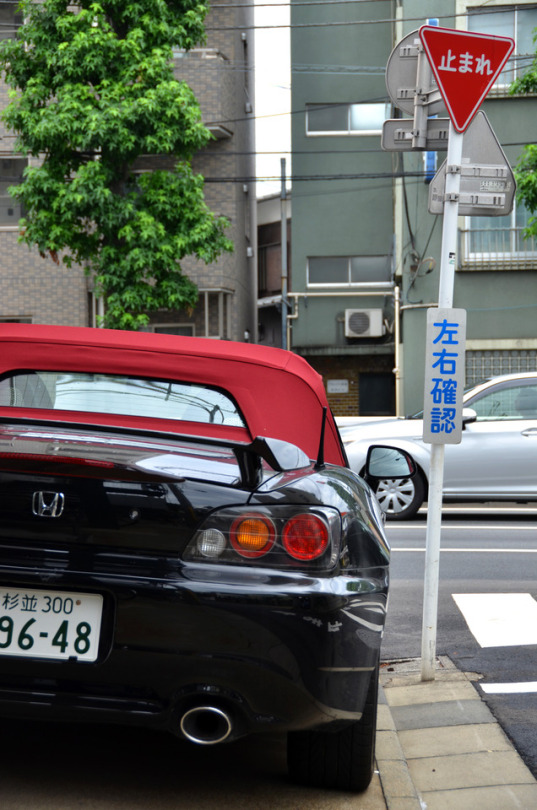
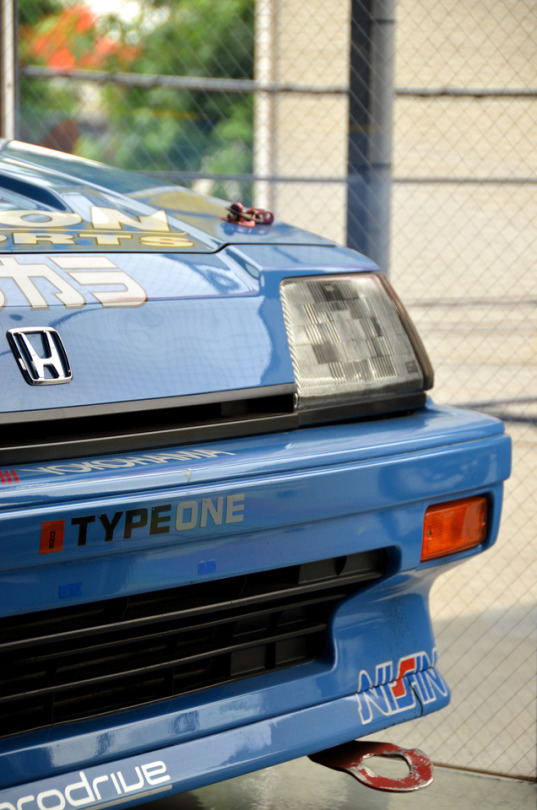

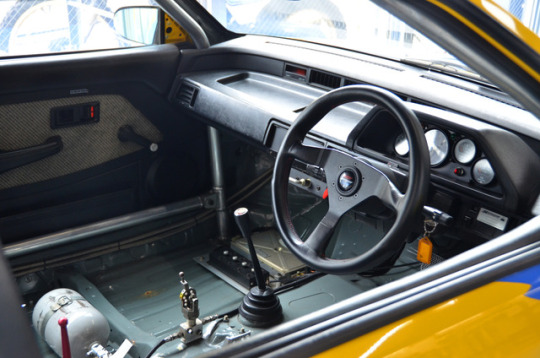
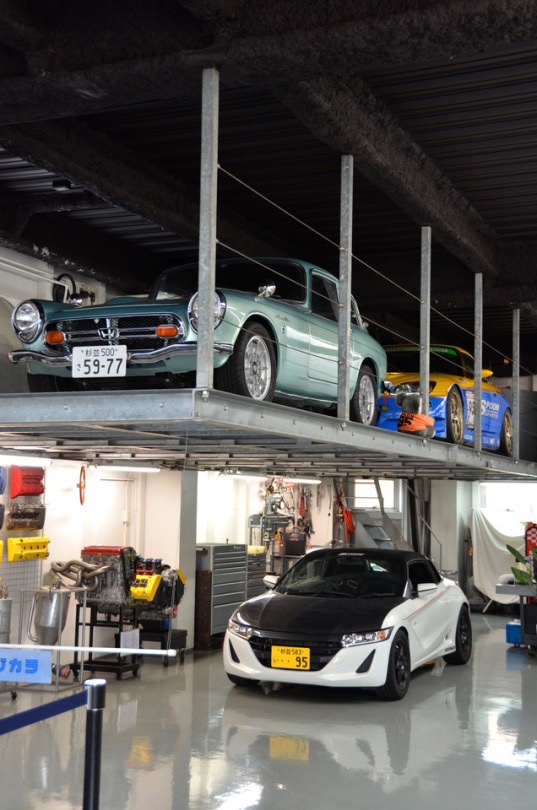
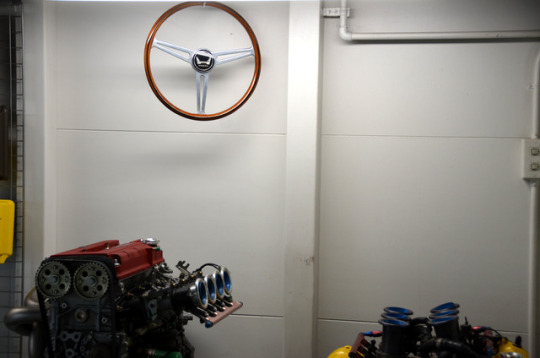
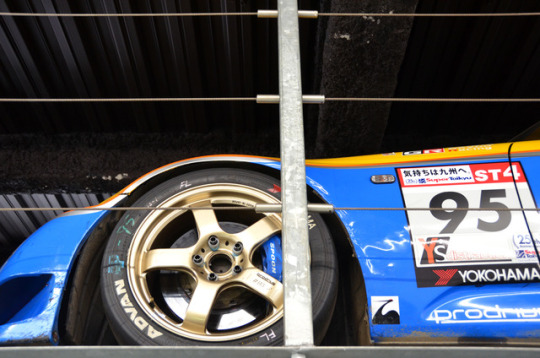
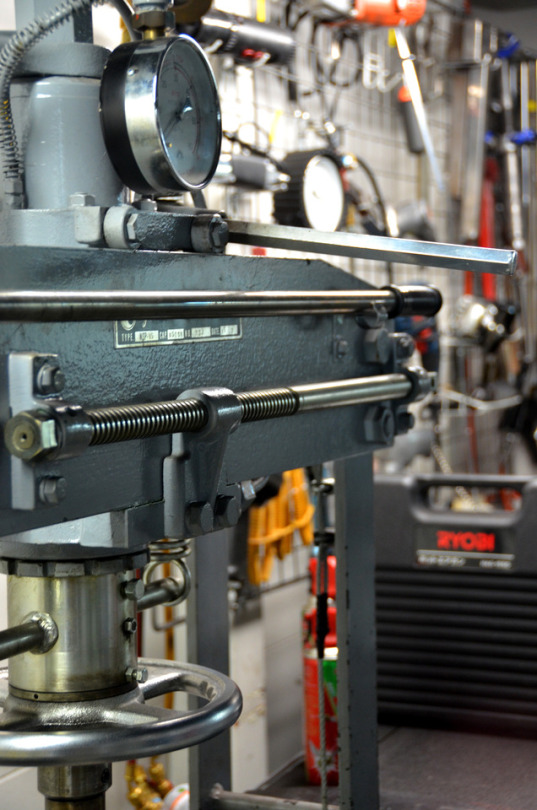
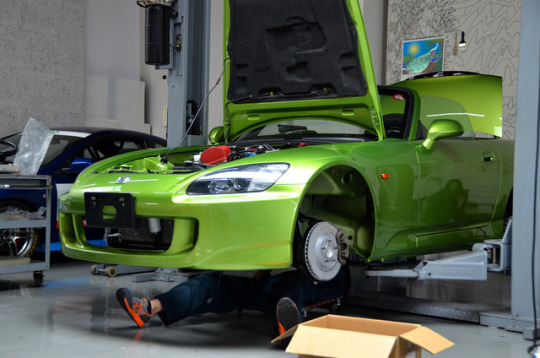

[07.01.17] it seems a bit strange to wrap up my last couple of days in japan with a dissection of yesterday’s visit to typeone and spoon, but trust me - i think it’ll all make sense. even if you’re bored by ‘car culture,’ my hope is that if you read this entry, you can gain an appreciation for something that is considered as one of the many staples of japan’s nationalistic pride.
i’ve explored incredible architecture in tokyo and osaka. i’ve studied farming techniques in odawara and tottori. i’ve witnessed japan’s craze with electronics, anime, music, and video games in akihabara. and, of course, i’ve eaten the strangest foods throughout the whole country. still, one unexplored realm that was staring me in the face remained - japan’s precedent-setting tuner and automotive culture. ultimately, the impact that automotive magnates like toyota, subaru, datsun (nissan), and honda had on the world through design strategies and economic competition is something that i wanted to soak up before i left.
those of you who know me well likely are aware of my interests in automotive design and mechanics. i’ve always been a tinkerer, taking the utmost solace in working on my 1967 chevy c10 pickup truck. i also, for a while, seriously invested my time into motorcycles, all to satisfy what seemed to be a growing obsession with motor related things. at the helm of this obsession, for numerous reasons, was a fan-boy obsession with the history and work of the honda motor company.
the birth of honda is an incredible one, rich with stories of war complications, clashing nationalistic ideals, and redemption. though i won’t go into it, if you’re interested, you can learn more, here. in many ways, it’s this impressive story which had paved such a promising future for the company. it is also the catalyst of my obsession with honda’s racing heritage, history, and its overall ethos. honda, like so many of the other big-name japanese automotive companies, echoes the same japanese discipline that i’ve been citing in my previous posts, but at a greater scale and over a longer time.
with this nationalistic respect towards honda (and others) comes an equal appreciation of their tuner companies. just as how mercedes benz signs over tuning rights to AMG, chevrolet trusts callaway, and subraru works intimately with STI, honda’s racing name relies on spoon. spoon, which deals with the design of various aftermarket parts, depends on the mechanics and fabricators at typeone for installing. in this way, a complicated, albeit communicative relationship is formed between honda, spoon, and typeone, and thus all are on a national spotlight.
as it turns out, my visit to typeone and spoon had just occurred after the world famous automotive journalists at jalopnik wrote an article on their own summer visit. seeing what they saw, and what they didn’t, for that matter, was extremely thrilling. when considering that spoon and typeone are almost hidden with their modest street fronts and minimal signage, the fact that they output such exciting and precedent setting work is surprising.
the clinical cleanliness of the shop is overwhelming. i’ve never seen a metal fabrication station so clean. the sheen given off by the clean and polished floor is akin to the reflectivity of still water. i apologetically glanced at the two mechanics in the shop as i squeaked past them in my sandles, but neither of them seemed to care. both were busy at work, attending to the lime green ap2 2005 honda s2000 restoration, only speaking when they needed to. “8!” one would grunt, followed by “10!” it took me a while to realize that, while one mechanic was under the car, he was calling on his other mechanic who was above the car for various socket sizes. they explained to me that they were ‘completely rebuilding the body from the shell on up.” (the s2000 isn’t a traditional body-on-frame vehicle, but rather a more sophisticated and single-piece monocoque. you can imagine, then, the intense hours it takes to reshape any bent or corroded metal, just on the frame, alone.) the owner had purchased the vehicle as an original owner, driven it for close to ten years, sensed nothing wrong, but wanted to be sure the vehicle was pure as per the the purists at typeone. so yes - a stock car, returned to stock. still, the project has taken over 2 months so far. with an incredibly dedicated attitude, the mechanics take their time to be sure that the best thing that they can possibly create is delivered.
along with the cleanliness of the place, the architecture of the shop is worth describing. it’s a two-story complex, where customers drop off their s2000s, civics, and integras on the first floor. a master engine builder works on the vehicles’ motors down here, and is equipped to fully disassemble and rebuild any motor, if need be. a car is then transported above with a hydraulic lift, where all other facets of the vehicle are attended to (suspension, chassis, body, paint, etc). as such, most of the work happens on the second floor, which is also where all of my photographs were taken (with the exception of the s2000 that was for sale on the street).
a pretty neat later model civic hatchback was in the corner of the shop, stripped of all ‘unnecessary luxuries.’ do you like carpeting? unnecessary. sound deadening material? no need. all plastics - even the door trims - were eliminated to save weight. seeing the exposed shift linkage was pretty cool - a stock piece, i was told.
i actually held my breadth when i saw the “holy trinity” (maybe only i call it that) of vehicles - an original 1965 honda s800m coupe, an ap1 2003 honda s2000 race car, and a 2016 honda s660 racing prototype. seeing this evolution of the s-line from old to new was something quite special for me, especially since i am an s2000 owner and geek myself. i had never seen an s660 in person (we can’t even import them into the states if we wanted to), so seeing one right in front of me - let alone a race spec, carbon-fiber adorning car - was just nutty. the s2000 was a cup car that the team have been racing for a couple of seasons. i especially admired all the dents, rust, and loose parts that still embellished the car. noone changes them, apparently, because noone has to. you can tell where certain parts have been spray painted over, and where bondo filler marks remain. so cool - because racecar.
personally, i’m really excited to see what spoon and typeone does with the new civic type r - a highly anticipated and acclaimed return by honda to the ‘r’ sport series. daisuke (my contact there, and also the second daisuke i’ve met in japan) expressed interest in this as well, though he said he cannot comment on it much at the moment.
as i pack my bags and get ready to return to minneapolis for a couple of recovery days before iceland, i can’t help but reflect on my month in this incredible country and be amazed at the diversity in experiences i’ve had. at a basal level, my time at typeone and spoon helped feed my hunger for all-things-honda. more importantly, however, my recent visits helped me better understand why the japanese are so proud of what they do. may it be culture or food, textiles or vehicles - japan is full to the brim with discipline, ability, and pride, and i think that they’re utterly justified. and so, it’s for this reason that i cap off my visit to this enigmatic part of the world with a strange entry on a set of honda tuner companies.
the next time i write, i’ll be in the comfort of my minnesota home and in the company of my brilliant mom who will hopefully be feeding me exuberant amounts of traditional turkish food. she’s a busy woman with work, so wish me luck on that last one.
japan, it has been real. thank you. sayonara!
2 notes
·
View notes
Photo
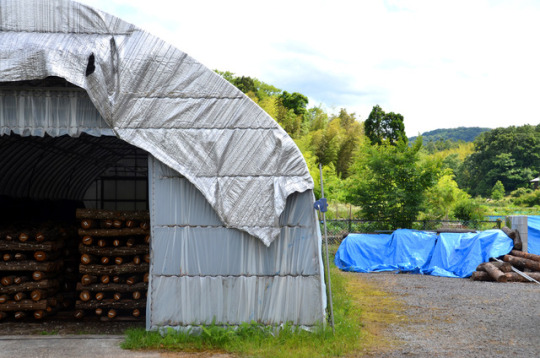

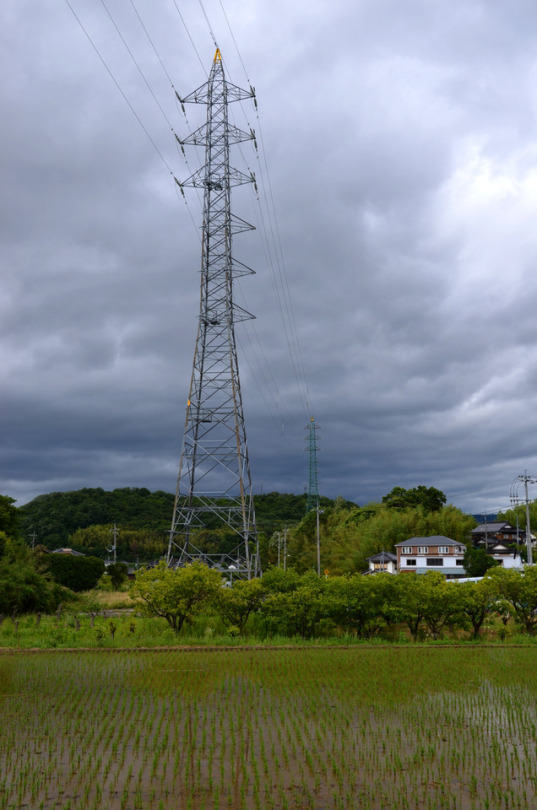
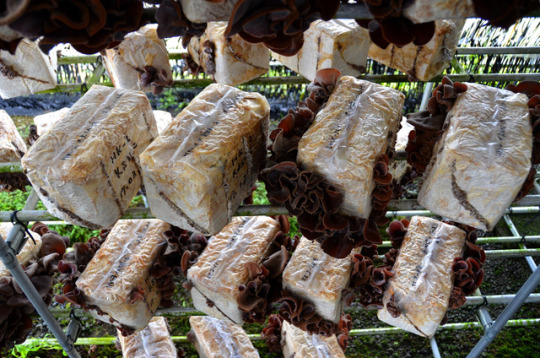





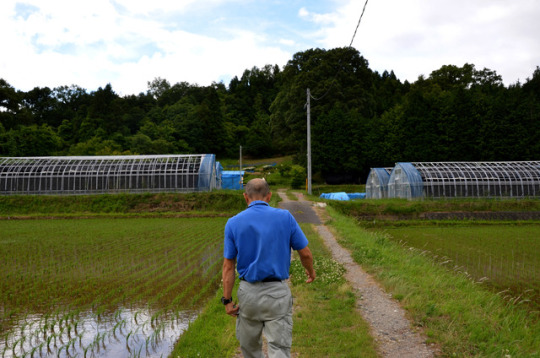
[06.22.17] i’m currently sitting on the super hakuto bullet line on my way back to osaka, and it’s absolutely pouring rain outside my train window. i just wrapped up my day trip to tottori to visit the kinoko mycological institute of japan, and i have so much to tell you about!
as much as a privilege it was to visit this place, i could tell that i was one of their weirder visitors. later, at the end of my tour, i was told that they had never had anyone visit who wasn’t a mycology scientist, prospective client, or company interested in purchasing their cultivation equipment. i’m not sure if i should be proud of this or not, but hey - i’d be weirded out by me, too.
i directed my networking resources towards the tottori mycological institute (TMI) in hopes of securing a visit simply because they are japan’s leading research organization in advancing mycology and various mushroom cultivation techniques. dr. kazuhisa terashima, the senior research fellow at the institute (who also happened to be my primary tour guide) expressed to me that since 1947, the institute has made it an initiative to contribute to the development of the mycological industry throughout several sectors. as you can imagine, for someone like me who is proposing the integration of mushrooms with acoustic architecture, the spirit and ethos of TMI is biblically relevant to my future thesis work next year.
excitingly, TMI also looks to challenge the existing culture surrounding mushrooms. that is to say, while the institute focuses heavily on researching the edible characteristics of different spawns of mushrooms, it also looks to cultivate mushrooms to test their medicinal and therapeutic purposes, among a variety of other things. of course, medicinal mushrooms are no new thing, but most scientific understanding associated with them is still rather untried.
as i saw with oyama no taishō, mushroom growth most commonly (in japan, that is) reverts to log-based cultivation - especially with shiitake mushrooms. through several intricate and cyclical steps of soaking, fermenting, air-drying, misting, and heating, fruiting of mushrooms can be repeatable for up to three years. though rooted in ancient mushroom practices, the techniques implemented by oyama no taishō depend greatly on the finesse that TMI has mastered through its decades of experimentation and research. thus, seeing wood log cultivation at TMI added to the strong imprint the very same technique had on me at oyama no taishō. in this way, the work that comes out of TMI sheds light on future mushroom methods and mycology implementations, while lending clarity to traditional techniques.
let’s start with the traditional cultivation methods that TMI has mastered. shiitake mushrooms, which are likely the most popular edible mushrooms in east asia, are understandably in high demand. dr. terashima expressed to me that about 200 cultivars have been developed - and that of these, TMI has contributed 39. one of these cultivars includes the kinko-115, a premium shiitake species mating between kinko-241 and TMI-198 (you’ll note that TMI has a stringently set labeling technique on all of their logs). as a result, huge fruiting bodies with thick caps resulted, promoting superior tastes and withstanding the cold temperatures of winter. kinko-115 quickly became the most ecological, economical, and tasty strand on shiitake, yet. now, one of the many side adventures of TMI is to push the morphology of kinko-115 even further to reset the bar for mushroom taste.
i won’t drown you in the minutia surrounding the science behind these log practices, simply because much of it is the same as it was at oyama no taishō, but i will mention that TMI strictly uses oak wood. in addition, while oyama no taishō squeezed three years out of each log for re-fruiting, TMI apparently recycles their logs for two years, at the very most.
more applicable to my thesis, of course, is TMI’s extensive work with mycelium and the strands of mushrooms that it can afford. in addition to housing impressive incubators and sterilized growing rooms for mycelium, the institute sports several laboratories in which scientists test the various form-factors that mycelium might be able to exist in. dr. terashima showed me, for example, a room of huge metal tanks, which dilute mycelium into a liquid nitrogen form. this liquid can then be sold, distributed, and applied more easily (via a syringe) by a client, effectively making mycelium more affordable and its benefits widespread. i’m not sure if you’re as excited about this as i am, but the gears are already turning in my head. just think of the affordances of a liquid based growing agent in the context of growing a predetermined and complex shape in a mold! brilliant.
at this point, another scientist by the name of dr. yasuhito okuda took me on a tour of the incubation rooms, which cultivated mycelium blocks in the more traditional (dare i say), block-based fashion. the images i’ve included in this post demonstrate the institute’s mastery in cultivation of oyster, shiitake, and other species of mushrooms. depending on the species, each mycelium block can birth mushroom through its spores in 18-30 days. though the actual germination of mushrooms is somewhat irrelevant to me (since i’m concerning myself with proper mycelium growth, before actual mushroom spawning), seeing actual mushrooms spawn out of seemingly meaningless blocks was surreal, at the least. it was, in the true definition of the word, awesome.
dr. terashima then took me on a quick ride in his toyota to the ‘shiitake forest,’ which was quite literally what it sounds like - kilometers upon kilometers of vertically aligned logs, all giving birth to mushrooms. it was at this point that dr. terashima explained to me the difference between vertical and horizontal log orientation. if you remember, i had seen both techniques employed at oyama no taishō, though i was confused about the intent of either. dr. terashima emphasized, like takako at the other farm, that vertical growth allows each mushroom to ‘reach’ up to the sun. by arcing its roots, its taste apparently improves. however, farms that are limited in retail space opt for horizontal stacking, which is far more space-friendly. he explained that depending on the strand of shiitake that they grow with their logs, they’ll grow horizontally or vertically. for example, the aforementioned kinko-115, as well as its better counterparts that are still in beta form, would never be cultivated horizontally.
i’m extremely grateful to both dr. terashima and dr. okuda. they expressed the utmost interest in my own research, which they certainly didn’t have to do. ultimately, observing mycology from the perspective of a scientist was a privilege, if not an eye-opener. if i can pull together my final mycology-related visit in japan, i’ll be able to witness its role at the corporate scale. but more on the development of that opportunity as it comes to fruition!
2 notes
·
View notes
Photo

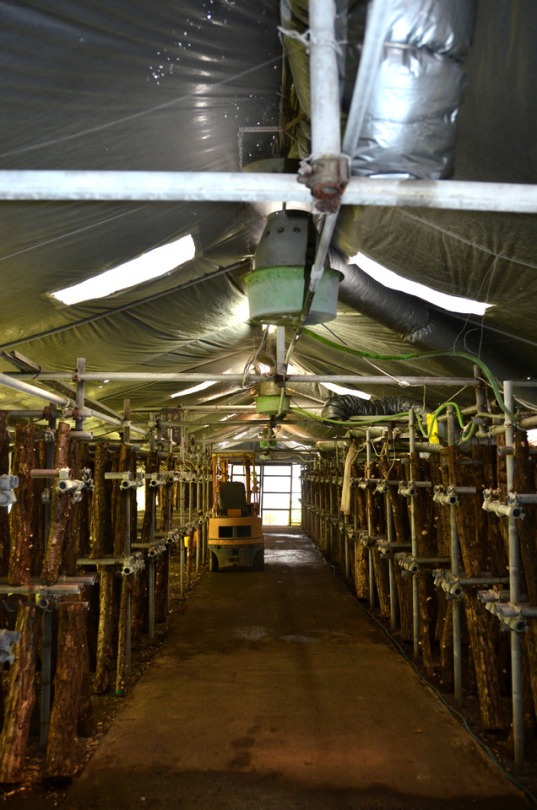

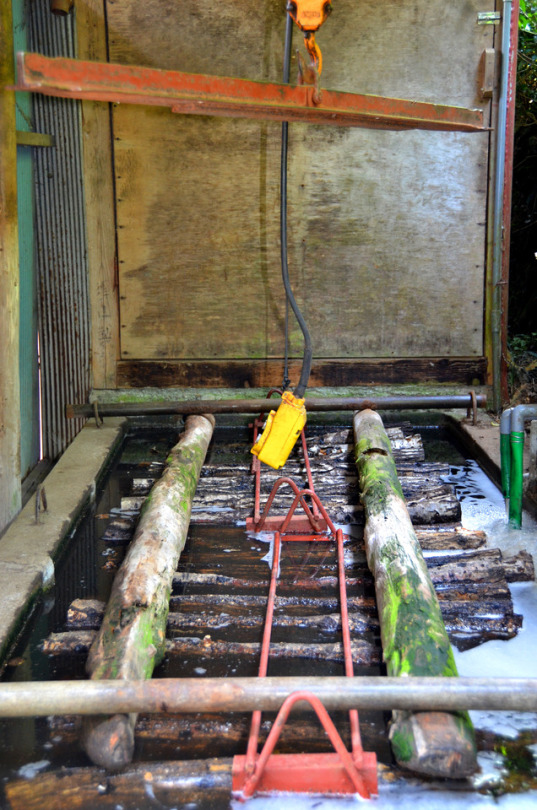

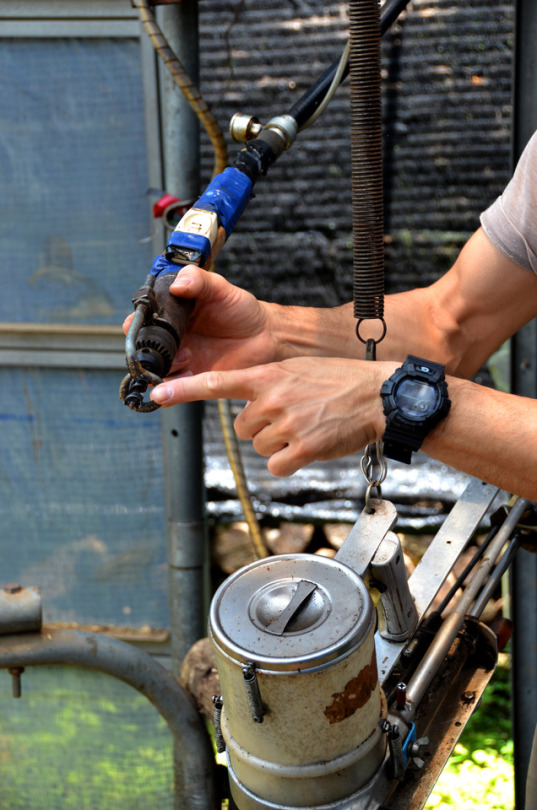


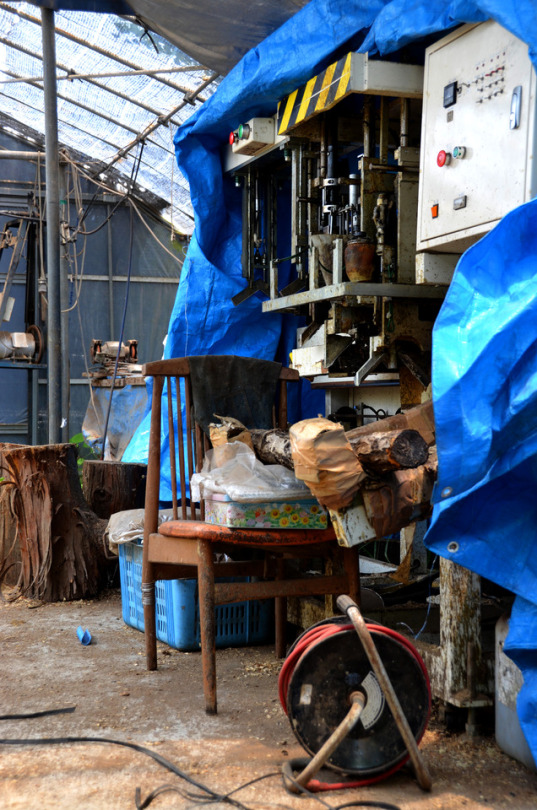
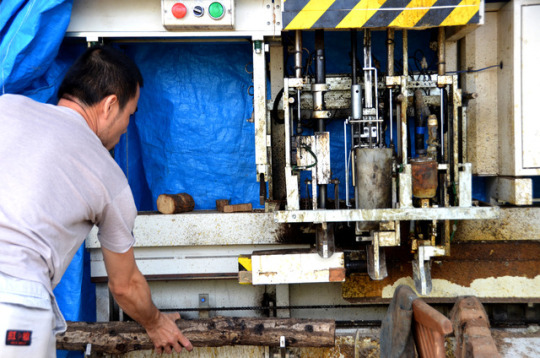
[06.15.17] today, i had the privilege of visiting the family-owned mushroom cultivation farm, oyama no taishō, which has been perfecting the art of shiitake mushroom farming for over 24 years. i’m still a little flushed and surprised that they allowed for someone like me to come to their farm, but i’m not questioning it. let me walk you through the organization of events prior to my visit, as well as the farming day, itself.
i had really been struggling with their website, since it is completely in japanese. thus, finding any contact information provided quite difficult. over the several days i have been in japan, i asked as many japanese natives as i could on how to navigate the website. surprisingly, it wasn’t any hostel worker who got me through, but some random girl on the street urging people to come into the made-famous ‘maid cafes.’ i don’t even want to get into what i think about those places, but if you want to look it up, check this out.
in either case, this sweetheart named yuna helped me decipher the site, and i was able to email the farm. within hours, an equally friendly lady named takako emailed me back with broken, albeit discernible english. after basic introductions and several back and forth emails, my research intent became clear to her (as clear as ‘building materials using mushrooms’ would be lololol) and we gained an understanding of expectations from one another. i was invited to the farm, and she even suggested that they pick me up from the train station. google maps only showed a 1.3 km walk, but she insisted. i obliged, and set towards haneda.
well, boy was i grateful for their pickup. the 1.3 km drive, in the minitruck, took over 20 minutes. the farm happens to be on a severe incline, and the winding roads to go up to it present daunting cliff overhangs. the same stuff from the movies. no joke.
a young man named takashi picked me up. we couldn’t really speak to one another in light of the language barrier, but he seemed to exude a lot of excitement. as i later found out, it was pretty rare for people to ‘randomly come through to the farm.’ in retrospect, i must have been the most bizarre visitor to see them.
once we got to the farm, takashi introduced me to takako, her mother, and her father. i met some cute cats (whose names i cannot remember), and then takashi took me of a tour of the facility.
the farm has several ‘houses’ that house prepared logs, dropped off by a partner logging company. these logs stack either vertically or horizontally. temperature and humidity are meticulously controlled in these houses. as takashi explained to me, ideal humidity levels never go over 80%, and temperature never exceeds 90 degrees.
the logs continually cycle through misting (humidification), heating, cooling, and flushing (in cold water baths)to expand and contract. any log can spawn several generations of shiitake mushrooms, but can only continue for this cycle for up to three years.
takashi also explained that there are several benefits to horizontal and/or vertical growth. none of these benefits affect taste per se. rather, they affect the aesthetic quality of the mushrooms and their directional growth. you can see, for example, that all the shiitake which have blossomed out of the vertical logs arch upwards. depending on the consumption method (i.e. grilling, frying, etc), this affect might be more desirable.
you might be asking yourself: ‘okay, these logs are prepared, cycled through, and nurtured. but how do they give birth to mushrooms?’ good question. throughout the three to four hours i spent on the farm, i had the same underlying question pestering me. though i should’ve asked earlier, takashi explained towards the end of the day the two ways in which they can implant mushroom spores into the wood - both of which accomplish the same thing, but do so with different speeds.
the first involves a gun resembling a drill punches a hemispherical cavity into the log. after this space has been excavated, a tool resembling a pneumatic nail gun fills this cavity with a paste, which is also provided by a partnering company. though we got confused with one another when i asked about what kind of ‘paste’ this was, i have a pretty good idea from my own research that this paste was mostly fungus/spore based - a mycelium paste, of sorts. i would’ve uploaded an image of the canister, but i’ll spare you, since i’m not sure if any of my readers know japanese.
the second method does exactly what i just explained, and in the same order, but through automation. the huge (and beautiful... drool) machine resembling a diesel tank engine does just this. takashi powered this up for me and showed how a log enters into the machine’s claws, gets ‘stamped,’ turned, stamped again, and then filled. one log can be covered in +/- 20 dimples in around 15 seconds. pretty efficient, pretty japanese.
we then picked my favorite mushrooms and grilled them for lunch. no sauces other than soy sauce to top them off, yet they were the most delicious vegetables i’ve eaten in a while. they still reeked of that fresh dirt smell - sort of akin to a recent rain. combined with the smokey coals of the grill, to me, the mushrooms needed no other taste. sure beats organic trader joes mushrooms.
though none of my research (at least at this point... ~ massages beard inquisitively ~) is interested in the taste qualities of mushrooms as they relate to architecture, the experiences i gained at this farm are invaluable to me and my research process. one thing that utterly failed in my previous mycelium experiments was the actual cultivation of the mushrooms in an efficient way. though the farm specializes in shiitake, specifically, i’m sure that i can adapt the insight i gained towards my own work.
now that my visit to oyama no taishō has come to a close, i plan to continue down south along the east jr line. tomorrow morning, i’ll leave for hamamatsu if i cannot stop in shizuouka beforehand to take photographs of mount fuji (the town offers some pretty spectacular views, i hear), but i also worry that the weather will not allow me. it has been especially foggy and rainy here, so i might have to skip out. nonetheless, i’ll be in nagoya by tomorrow night, and plan to stay there for a couple of days.
from nagoya, i’ll head down to kyoto and osaka and soak those cities up for a few days. i’m planning to travel to tottori on june 21st, because i was finally able to secure a meeting and tour with the tottori mycological institute. i probably shouldn’t even start writing about that yet because this post has gotten too lengthy, but let it be known that i am inexplicably pumped to somehow get a foot in a door, there.
after all of this, i’ll be slowly returning back to tokyo because i secured some visits and tours of some non-architectural ‘museums’ of sorts. more on this later... but those of you who know me and my side obsessions with tuner culture might be able to guess what comes out of japan. hint: ~ jdm ~
i don’t think that i’ve expressed this at any point in this blog, but something peculiar happened to me when i was on the subway, still in tokyo. i mention it only because it might help explain why i am so in awe of japanese culture, and why i respect the diligence and discipline of the country’s work ethic.
i happened to get off at the same station as a well-dressed man in a suit at around 9:30 or 10:00 at night. he was carrying a briefcase and sporting some kind of expensive watch. his shoes were shiny, and his walk upbeat. he sped up, and i lost sight of him. but i remembered the back of his head distinctly, because he had this iconic mole on the left side of his neck. i have a thing for moles.
nonetheless, some minutes later, i took a wrong turn in the subway system and ended up in a small alley tunnel. i ran into my businessman friend, again. he had just finished changing out of his suit, shielded away in this alleyway, with thousands of people rushing by, oblivious to his existence. realizing i was invading in on his privacy, i turned around - he never noticed me, because he had his back to me. but i happened to catch a glimpse of his mole to clarify his identity, as well as his new attire. it was a navy blue worker’s uni-suit with indiscernible writing on it. written in english, however, was ‘crane operator.’
it then dawned on me how hard working people are here. businessman by day, and crane operator by night, this guy was working his life away. suddenly, studio life became irrelevant. so did my coffee job. thoughi wasn’t necessarily looking up to him in awe, i just couldn’t believe how someone could juggle so much, from such seemingly different sectors.
it’s in this way that i am intrigued by japanese culture - specifically by its workforce. people use the train to catch shut eye. most aren’t on their phones to socialize, but get work done. it’s unlike anything i’ve ever seen.
also, a lot of people have blackberry phones here. honestly, that’s the easiest way to my heart.
and, to conclude, a brief aside - thank you so much to all of you who have reached out and connected with me to provide feedback on or encourage my writing of this blog. that people are actually reading this makes me really happy. keep the questions and inquiries coming - and thank you!
oh, and for any of you nerds who want to learn more about traditional mushroom cultivation, check out this pdf from the university of vermont.
2 notes
·
View notes
Photo










[06.13.17] i’ve been spending the last couple of my tokyo days in smaller suburbs, still trying to get a feel for this enigmatic and vibrant city. yesterday, i went to koenji - a seemingly quiet city with narrow alleyways, but an active town at its central node. koenji has a lot of fun kawaii shops and is riddled with youth. forgive me for saying this, but you get sort of an ~ artsy ~ vibe in koenji. as such, i bought a bunch of cat keychains, because yes.
the primary reason that that i decided to navigate to koenji was to see the world famous house na by sou fujimoto.
first off, i have no idea how people photograph this damn thing. even my wide angled lens couldn’t capture this building with its narrow streets and contextually towering height. i even whipped out my blackberry in a futile attempt to take a panoramic - but that failed miserably.
putting all of that aside, the house was really exciting to see. fujimoto is famous for his blurring of interior and exterior, and his seamless blending of program and landscape. sectionally, the house behaves very much different from how most of us live. instead of navigating a home based on floors and rooms, you sort of float through one room into another, and you can always see up and into another zone, or down and towards a different one. in this way, the homeowners live on several (something like 20+) platforms, rather than singular, extending floors. here’s another article which summarizes this eloquently.
i made another friend at the hostel! marie, a canadian-french wanderlust, has opened my eyes to how to travel safely and independently, while still having a good time. we went the other day to akibahara, which is japan’s famed origin of everything video game oriented and anime related. all in all, we had a riot. a different night, we ended up going out for a night on the town and dancing with cynthia and two guys she met from miami. it’s always great knowing you can relate to people and connect after not having known them for a lot of time. i have faith that we’ll stay close in touch.
continuing the conversation of color in japan, i’m still thinking that most color comes not from architecture, but from local and global scale advertisements. this week, however, i’ve started to gain an appreciation for the setting and rising sun, here. i know that sounds cheesy, but there’s something about monochromatic backdrops (i.e. architecture and infrastructure) onto which the sun sets.
i’m obviously not the first genius to have thought of this - japan’s flag even echoes this sentiment. still, seeing it in person has started to help me think about light in a different way. i suppose that my limited exposure to light so far has been to take light, disregard its innate color, and use it to wash onto a color to incite a specific affect. japanese design (and, quite frankly, their way of life) inverts this idea, celebrating the innate yellows, oranges, and reds in natural light and putting them on display on various backdrops and canvases. even the simple stairs i caught sight of created something far more magical than if the stairs were altered in their color, as well.
to further illustrate, i got silly drunk with some friends the other night just outside of shibuya, and missed the last subway (by a lot). it was 3:30am, and by the time that marie and i had walked out friend home (shoutout to hugh from interpunct!), it was 4:00am. we were about 2 hours away from our hostel by foot. fueled with the last bit of residual sake and gin, we trekked back.
the change in color across the japanese urban landscape was something i’ll never forget. light literally washes over the whole city, but at a pace reminiscent of fast forwarded and transitional cinematography. the shadows that are cast seem almost planned, dare i say. all in all, that walk was an experience that i’ll never forget.
i’m not sure if i’m making sense, here. so thanks for keeping along if you still are.
yesternight, i went to the top of the tokyo city hall, which offers some brilliant views of the city atop its observatory deck. if you pay close attention to the uploaded photographs, you can see some pretty famous buildings to the north and east.
anyways, i said goodbye to my incredible hostel buddies, and made my way to yokohama. i decided to book another night at one of these prosthetic hostels for tonight. you live in these little tubes/pods, and slinky into your pod and then go to sleep. if you wake up in the middle of the night, like me, you bang your head on the top of your coffin. but at $17 a night, i’ll bang my head all night.
i may have definitely snuck into the baths that this hostel offers (for free!). there is a sign that clearly prohibits any tattooed individuals from entering, but i just draped my towel over my whole arm and entered. i mean, when you’re butt naked with other butt naked guys, whose going to say anything? i was in the clear.
what an interesting ritual. i deliberately slowed my pace so that i could watch (non-creepily) other men go through the process. first, we all quickly rinsed off in an open shower. then, we crouched and squatted on this little foot stool and sat in front of a mirror. each station was equipped with several types of therapeutic body soaps, shampoos, lotions, and a portable shower head. there was a little bowl to wash and soak your feet. so we all bathed while squatting on this foot stool. then we all sat in the actual hot baths. normally these things activate my asthma pretty vigorously. but i was set for some reason. must have something to do with quitting smoking!
we floated around in this bath for about 15 minutes. some men did yoga and other intense moves, but i wasn’t going to pretend like i understood or was part of what they were doing, so i just bobbed. others went into the sauna next door. one by one, we left the bath, and went back to our squatting stations. bathing felt so, so good at this point. all of my aches from miles and miles of walking each day seemed to go away. very nice.
yokohama is gorgeous, but i caught it on an extremely dreary day. it's walkable, but still very urban. it's a port city and all the huge boats are very impressive. there's a huge ferris wheel (the stereotypical cookie cutter image of yokohama port) and it twinkles at night. the people show no physical affection for one another, which is strange, but everyone is still hip as hell. i’m welcoming the slower pace of this place amidst a prevailing urban air.
one more day of yokohama, and then i’ll venture out to meet my contact on my first mushroom farm! i can’t wait to tell you all about it!
2 notes
·
View notes
Photo










[06.08.17] ohayō gozaimasu, from tokyo! i’ve been waiting for some time to write my first post from japan, simply because this country is so much to take in. today marks my fourth day in tokyo – four of six total days that i plan to stay here – and i just adore this place.
culture shock isn’t new to me – i have had the privilege of traveling throughout my life to some incredible places – but this country is something totally new to me. there are a lot of rules and ways of living that, understandably, i am very much unaccustomed to.
first and foremost, i sort of screwed up on the tattoo front. people give me strange looks. aghast looks. concerned looks. i guess that i am straight up banned from all public pools and gyms. being the tourist i am, i was pretty excited to see what the japanese hot springs were like. yeah, fat chance. two different baths i visited had huge signs deterring anyone with ‘excessive’ ink from going in. i definitely should have done my research on that front, beforehand. that being said, all things shibuya-related seem to be tattoo friendly, but i’ll get to that later in the post.
second, i feel like the epitome of a stupid, ignorant american. a minnesota friend asked me on whatsapp the other day what my ‘low’ so far was, and i told her about how, when i entered a charbucks to steal their internet for this blog, i apparently swung my drybag across someone’s table and destroyed their school notes with their iced latte. not the first time i’ve spilled an ice latte on someone (#laprima) but i guess i had no idea i even did it this time. i sat down, got to work, and was approached a full fifteen minutes after my drink-slaying by the victim. he asked me if i was unaware of what i had done, or if i knew and was passive aggressively ignoring him. needless to say, i was duly embarrassed - especially when he told me to try to be much more careful. i apologized profusely and proceeded to flee the hell out of there. imagine the inner-turmoil that poor guy probably faced in those fifteen minutes.
moments like those are unforgiving. i keep tripping over the stupid speed humps in the middle of the street. there are like three different subway systems and i keep buying the wrong tickets for the wrong network of lines. i don’t know what to look at on the subway when we’re all packed like sardines and i feel all the eyes on me and my sleeve of ink. maybe they’re counting the number of bobby pins in my hair?
thankfully, there IS an app for my blackberry that teaches preliminary japanese. that has proven quite helpful to distinguish basic salutations, iced and hot coffee preferences, and some other things. aside from that, however, i’m a blind, stupid, white american.
just the other night, for example, i went to the shibuya crossing - a huge, four-way intersection akin to times square in new york city. after an insanely fun night of bar-hopping and exploring the area, i naturally had the munchies. ‘no problem,’ i told myself, after seeing a close by mcdonalds. ‘i’ve got an app for this.’
well, i’ll spare you the long story, but in the end, i accidentally ordered 3 big macs. three. big. macs. i guess that when i said ‘three,’ trying to confirm that the big mac was at around 300 yen, i ordered three, huge, big macs. i wish i could play it off cool, but i know that all eyes were on the slightly tipsy, visually exhausted and beardy faced american with short shorts and a tray with three big macs.
in addition to the whole language struggle, i’m having to rework the order of operations involved with everyday and common tasks. for example, the first time i entered a traditional ramen venue, i was met with continuous banter and excited arm movements urging me to go back outside (or so i thought). so i went outside. then the chef went outside and motioned for me to go in. so i went in. at this point, all customer eyes were on me, of course. well, it turns out, you’re always supposed to order your food from this atm-esque machine, get a ticket stub, and hand the stub to the chef or waiter.
this sense of automation is ubiquitous across tokyo. everything seems to be like an atm dispensary. cigarettes, tampons, ice cream, coffee, beer, ticket machines... what have you. that’s cool and all, but it just takes a lot to get used to it.
all of that aside, tokyo is gorgeous, and its people are wonderful. generally, people are very nice. i’ve learned to bow at least as low as the person who has bowed towards me during a salutation. everyone rides bicycles, and noone - i mean, noone - locks them. the bicycles are shaped pretty weird. think of a west coast customs styled, elongated chopper. but with tiny wheels, and baby seats on the handlebars and behind the rider’s seat. mothers ride these things like absolute bosses, carrying their toddlers around, weaving in and out of traffic. i love that. and generally, the age spectrum of riders is very, very wide. 70-85 year old women and men ride these things without worry. oh, and noone wears helmets - not even the police officers or firemen (they ride bicycles, too) - but i did witness, strangely enough, the ambulance drivers wearing badass, full-faced helmets.
i also quite enjoy the quirkiness of this city. i haven’t been able to ascertain whether it’s a city culture or national identity, but it’s certainly interesting. everything involves cute drawings. cats are everywhere. i can definitely see the influence of manga and anime on even everyday advertisements, instructionals, and precautionary street signs.
random moments of strange architecture keep things upbeat. in between two seemingly brutalist buildings, for example, will be hidden a cute, traditional style homed, but with rounded off windows - because why not? i quite enjoy this. it makes wandering the city a lot more fun.
7-elevens are also a quirky haven for me. everything is dirt cheap and i can always grab a mysterious lunch, whose meats i can’t identify, for less than 3-4 dollars. they also accept credit cards, which is a growing rarity in japan as i’ve come to realize.
from an urbanist’s perspective, tokyo is quite interesting. each hub of the city is centered around the subway stations. around these epicenters, there is a lot of commotion (something i’ve tried to capture in the photographs), both vehicular and pedestrian. a lot of noise and advertisements. but just take a walk, two or three blocks away from this node in any direction, and you quickly meet the quiet, slow life. people actually walk slower than i do, which is incredible, because i’m lazy. i quite enjoy this polarity between paces - fast and slow - all within an approachable distance. it makes for eclectic experiences which are all close to home.
color is an interesting thing to address, but i haven’t been able to quite yet wrap my head around it. at first, tokyo seems to be vibrant in bright colors, but upon closer inspection, these colors come not from infrastructure or architecture, but rather advertisements. advertisements, as the photographs likely will show, are everywhere. they smother everything. and any other natural color (by natural, i mean to reference color that spawns from anything that doesn’t try to incite shopping) comes from landscaping elements. you’d think that this would evoke something ugly, but strangely, it’s fun and quite pretty. perhaps it’s because i can’t read anything that i am comfortable with it. i’d likely be far more overwhelmed with all my surroundings if i could identify certain advertisements and their meanings - but in general, everything is washed into one, multicolored landscape. it is, certainly overwhelming at times.
tomorrow i’ll be visiting a couple of museums and doing the whole touristy thing, but for the most part, i’ve been trying to blend into everyday civilian life. i’ve been walking my butt off for kilometers on end through the city, and have tried to avoid the rail system as much as possible. i seem to be more interested in the outskirts of tokyo (which don’t really exist, since the city is so large). so, i guess i like the interstitial zones, the back alleys, and the little markets i seem to run upon.
i’ve made a friend at the tiny hostel i’m staying at - she’s from australia, and she thankfully speaks a decent amount of japanese. other than conversation and having a good time, she has definitely proven to be an asset whenever we have gone out and i don’t know what i’m doing. it was with her that i survived the bar-hopping in shibuya and met some other people. i hope to meet several more people along the way. there’s something quite empathetic with meeting a fellow traveler. you don’t have any inhibitions or barriers, because whether you like to admit it or not, you’re both lost as hell.
tonight i’ll be meeting up with some carnegie mellon kids who are also in tokyo, so it’ll be good to see some familiar faces. i’m pretty excited to go stalk sou fujimoto’s house NA later in the afternoon, and i think that it’ll definitely be a highlight of tokyo. i just have to wrap up some loose ends before i start traveling down south to yokohama!
2 notes
·
View notes
Photo










[06.03.17] okay - i’m not even going to try to maintain any sense of professionalism when i write this post. what happened this morning at the house in orinda was INCREDIBLE and such a gem of an experience.
after leaving aaltan’s place in san francisco, i journeyed over to orinda. i got my camera and sketchbook ready, texted the homeowner, and was met by his assistant. from what i could understand, the house belonged to a man named gerald, but had recently started to be offered as a wedding venue (for a very steep price, i’d assume). if you ever need to book, check this out, and invite me, too! the lady i met, whose name was nadine, was the coordinator of this business venture.
after a brief tour of the site, she simply told me to go ‘explore.’ explore?? by myself? without supervision? i didn’t ask twice.
this usonian home was designed by frank lloyd wright and built in 1949 for the buehler family. like the house in carmel, the residence incorporates redwood with minimal steel, but utilizes concrete block instead of stone. the l-shape of the main building sports an interior courtyard with the famous coy fish wright loved so much. multiple surrounding buildings and elements, such as a pool house, japanese meditation center, miscellaneous gardens, and work garage, help cover the expansive 4 acres of the site.
the condition of this home is immaculate. gerald is an underwater archaeologist - a historic oceanographer of sorts - and uses the house to display all artifacts, pottery, and miscellaneous gems and objects he has collected throughout the years. it was an eerie experience to sit in the same furniture that wright had designed himself - or to see the famous dining area (wright believed that there should never be more than eight chairs at a dining table in belief that it would make for an overcrowded experience). the house even has the original red 1957 corvette used in the movie animal house!
the gold ceilings are shiny - what else can i say? i’ve never actually seen, like, gold. just sitting there. encrusting a ceiling. but wright knew how to spend people’s money, so go for it, wright. the joinery details echo a japanese style that i am lucky enough to soon witness in the next couple of weeks when i go abroad. by this i mean that most of the wood didn’t utilize nails or screws for connections, but rather other sophisticated japanese woodworking techniques.
all in all, the home is built for living - an idea simple enough to understand, but often not as widely executed in architecture, it seems. the drawers use spring mechanisms to close by themselves. the cabinet doors are pitched so that when you let go of their handles, they gracefully fall closed under the force of gravity. when all cabinet doors open, they engage an interior release switch which powers on a light. to think that these details were incorporated in 1949 is just awesome. when one reaches for a book on a shelf above the master bedroom, they are greeted with a padded wall. this attention to tactility and ease in use is unprecedented. in many ways, no matter how awesome all the other places i have seen thus far were, nothing is as humanist as wright’s designs.
then, gerald actually came over to meet me. we shook hands, briefly exchanged background information, and engaged in some conversation. i had been told by nadine before that he was not a fan of people randomly visiting his house, let alone without a wedding reservation, so i should be polite and respectful. well, one thing led to another, and gerald sat me down in the ‘pool house’ for a lunch feast of homemade yaprak sarma (stuffed grape leaves), hummus, dried figs, apricots, and drinks.
over lunch he told me a backstory of his archaeological life - as well as the many lives he has lived. what a guy, and what hospitality. an eccentric man at the very least, gerald makes sense as the owner of what may be the second most important frank lloyd wright residence in america (next to falling water).
in the end, he sent me off with a bottle of water and good wishes on my travels and last year at carnegie mellon. the experience i had with gerald and nadine colored the rest of my trip. sometimes, i guess, you just never know what will happen and who you will run into. sometimes, all you have to do is just text a stranger whose number you found in the depths of the internet. just sometimes, you run into people who exude such hospitality that you can immediately feel natural and like yourself.
i get that this blog is about the architecture i visit, but people like gerald and nadine matter much, much more. they are what made the buehler house memorable. they are what give it meaning for me and what make it an unforgettable experience. architecture’s inciting of emotion, after all, involves much more than the building(s), themselves. so, to gerald and nadine, if you are reading - a heartfelt thank you - and you are welcome in my minnesota home or pittsburgh apartment anytime.
i’m about to hit the road and drive back to los angeles after i finishing chugging my coffee. tomorrow i travel to japan. i’m not much of a planner, and i embrace spontaneity - something that drives my mother insane. given that, i organized and planned as much as i could, within reason. next time i write, i’ll be doing so from tokyo!
2 notes
·
View notes
Photo










[06.02.17] i departed very early yesterday morning to make some headway on the pacific coast highway. by no means did i need to take this route to head up to san francisco, but when you have a whole day to yourself and the excuse of the pacific salt water breeze, why wouldn’t you?
the whole route took about 11 hours since i kept stopping for photographs. a huge landslide that happened to occur about three weeks before my visit closed off about a half mile of the coastal road, which took some time and effort to navigate around. blackberry maps isn’t really that versatile, so i got lost a bunch of times. nonetheless, the stress and anxiety was worth it. just look at some of those views!
on the way up to san francisco, i was lucky enough to briefly visit frank lloyd wright’s walker house in carmel. though this wasn’t on my original itinerary, mainly in light of the fact that it just cannot compare in popularity and size to my focused house in orinda, i was happy to see it. it’ll be interesting to compare it to the orinda house.
the home, which was completed in 1951 by wright, was for the walker family - who are the very same walkers associated with the walker arts center in minneapolis, mn - my hometown! drawing this association was exciting for me, at the very least. the walkers had requested that the house be small - something like a 1000 square feet or so - and that it stand “as durable as the rocks and as transparent as the waves."
as with koenig’s house in los angeles, this house, as well as most of frank lloyd wright’s houses, blends perfectly with its surrounding landscape. most of this success comes from the materiality, which dwindles down to rock, stone, wood, and limited metal. of course, the other part to the success of these homes resides in their actual siting, often sunk into elevations and topography.
it was a bit strange to walk onto the property grounds based only on a couple of texts of reassurance from the orinda homeowner, but obviously that didn’t stop me. the original redwood still smells incredible. the insignia on the front gate was replicated several places throughout the rest of the site, including some of the interior ornamentation. as i found out later, most frank lloyd wright houses had a logo or icon of sorts, each of which were attributed to the homeowners for identity and stature. i guess this was the walker’s logo.
i made sure not to stay too long - i was there for only about 30 minutes, tops. i was just so worried that someone would call the police about a boy with a bun on a vacant flw property. regardless, i did take a quick moment to soak in the view from the front balcony, by the descending steps. i get that the image of ocean spray is overused, but until you experience it, i wouldn’t stop trying. those 30 seconds were what i needed to endure the rest of the drive, which became quite scary in light of the darkening sky.
once i made it to los angeles late that night (at around 2 or 3 in the morning), i was greeted with the bay bridge, which seemed less like a bridge, and more like a raised highway platform. nonetheless, i had made it.
this morning, i woke up at aaltan’s and we caught up on the past several years of each other’s lives. he had graduated with a cs degree from grinnell, and now works at apple like a boss. we borrowed his roommate’s bikes, had some beers, and biked around san francisco for the whole day. my legs were dead and my butt ached but it was incredible. we biked over the golden gate bridge, had incredible vietnamese food at a hole-in-the-wall restaurant, and met up with arthur at the bike shop he works at. later that night we had more beers, jammed out in his apartment on some drums/guitars like the good old days, and then went out for 2am burritos. all in all, it was good to see these guys. some things never change.
i’ll be waking up pretty early tomorrow morning to make the 40 minute drive to orinda. after seeing my final site, i’ll head back to los angeles, likely along the ‘long way’ through the pacific coast highway, again, to experience that one last time. i’ll sleep somewhere along the road, and then fly out to japan the next morning!
2 notes
·
View notes
Photo










[06.01.17] well, this is going to be a frustrating post, simply because i keep running into amazing homes that i am not allowed to document. today was no exception; but it doesn’t get any more restrictive than this. i had the privilege of visiting and observing the eames house this morning, but i’m not allowed to publish any photographs or sketches i took there. all i’m allowed to do is talk about it, but that seems a little strange. nonetheless, i figured i’d give you a brief overview.
all architecture students scrupulously study the eames house at some point in their lives, so i won’t go into it in depth. i will mention, however, the incredible detail work that went into the house. the turnbuckle style tension bracing between certain bays of the structure, for example, keep things in tension - a detail exposed to the exterior observer.
in addition, the home’s attention to program as it relates to the observing of film is worth mentioning. dr. javier berzal de dios, a well renound architectural historian teaching at western washington university, eloquently explains this - check out his publication:
Javier Berzal de Dios, “The Question of the Apparato: Plurality and Enclosure in Renaissance Theatrical Environments”
i happened to find this gorgeous webGL walkaround 3D model of the house a couple of weeks ago. it’s a bit basic, but should prove helpful for a novice to the eames house. click on this to view it.
a friend i made at the eames house (whose identity i’ll keep quiet in case i get her in trouble) directed me to another CSH (#21) that happened to be for sale up in hollywood hills. lucky for me that it was for sale - most of its window blinds were drawn open, and i had free reign to walk around the site and capture some gold images. i still refuse to admit to myself that it was probably trespassing, but because i didn’t see any signs...
CSH #21, or what is more widely known as the bailey house, was built in 1958 by pierre koenig. it’s exemplifies an impressive execution of pools which both circumvent and flow under the site, helping with cooling during the extreme los angeles heat. it successfully implemented steel in a luxurious, albeit economical manner, all while focusing on testing the possibilities of the american home. as most of the houses that i’ve written about have tested, an idea inherent to midcentury modernism seems to be the blurring of outside and inside lines - of landscape and building, exterior and interior. the bailey house is no exception to this. its pools, which serve a technical component as previously described, reach out to the extents of the site. koenig was aware that when working with such inorganic materials such as steel and glass, as well as geometries which adhere mostly to 90 degree angles, he needed more tools to integrate with landscape. water, in his case, seems to serve just this purpose.
the house had apparently suffered abuse throughout years of ownership by other careless homeowners to the point of a complete kitchen rebuilding and installment of a fireplace. after the site was deemed a historic landmark in the late 1990s, however, a restoration effort, headed by koenig himself, brought back the splendor of the house.
i most appreciated the crystal rocks within the pools, as well as the integration of water runoff elements within the beams and columns of the residence. some detail photographs i’ve included should show this. it reminds me a bit of mies, but it isn’t as clean - something i think should be celebrated for its honesty in construction, and something which is likely inevitable due to an aim to keep costs low (at the time, LOL).
just as with the eames house, i found another webGL walkaround model. this model shows the original furniture layout, as well as all of the old program intent. if anyone wants to explore this house further, i urge them to click on this hyperlink.
tomorrow, i’m headed to san francisco to stay with a couple of very close friends from my previous school before i transferred, grinnell college. i’ll be with them (aaltan and arthur) for a day and a half before driving to orinda for what may be the best part of my travels yet - a personal invite from the owner of a frank lloyd wright home onto his property and into his home. that will likely be a good story.
that same homeowner has also hinted at a frank lloyd wright home that is in carmel, which is on my way up. he said that he is close friends with its homeowner, and that i should just ‘check it out’ while i’m on my way up, even if ‘they aren’t home.’ not sure what that means for security, but i’ll keep you all posted on that, as well.
as my time in los angeles wraps up, i can’t help but secretly wonder what it is about this place that ignites such excitement in everyone. don’t get me wrong - everywhere i’ve been has been eclectic and amazing - but the sheer wealth of some areas, juxtaposed with the extreme poverty of others... there’s just such a divide in this city. i didn’t even get to explore the city’s rich music history, and yet i feel like everyone is an outsider to los angeles, in a way. i can’t quite place it. also, people are just rude. there’s something nice about the small-time towns i’ve visted in california along the way that has imprinted a greater cultural effect on me, in some way.
in either case, i’m very excited to see what san fransicso is all about. though three aren’t any sites to visit in sf that relate to my studies, i’m sure that the drive up and down the pacific coast highway will be an experience in and of itself!
2 notes
·
View notes
Photo
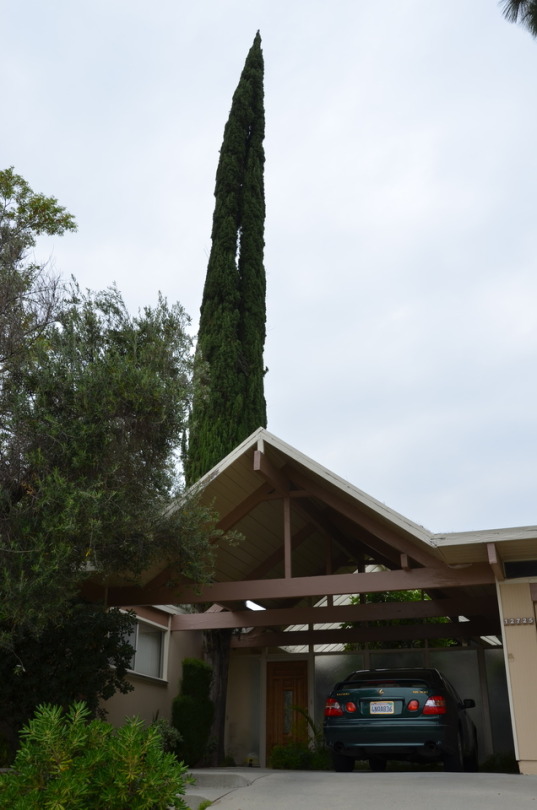
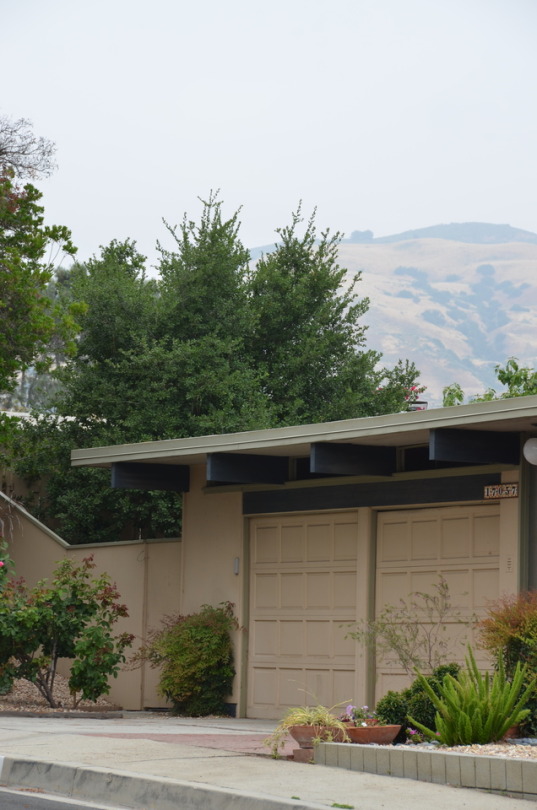
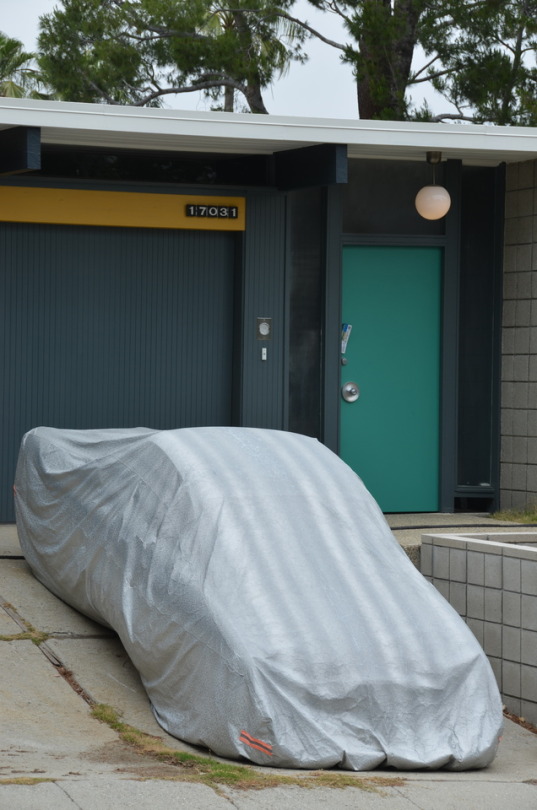
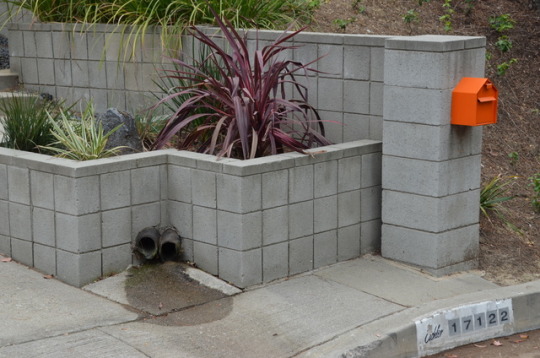
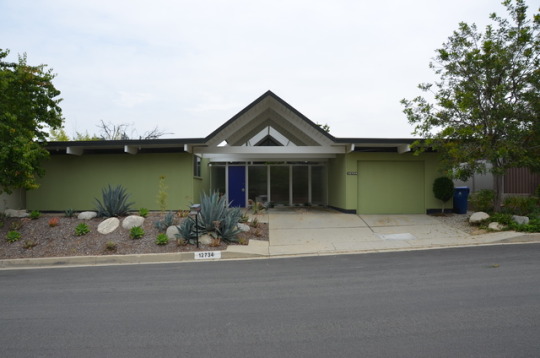
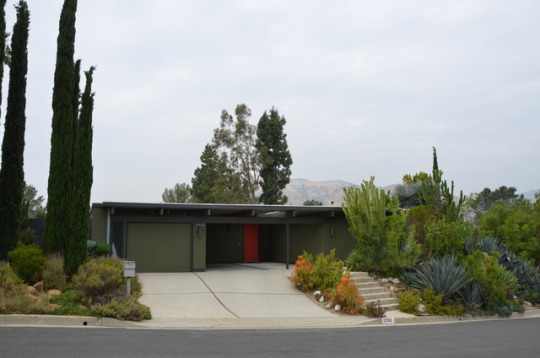

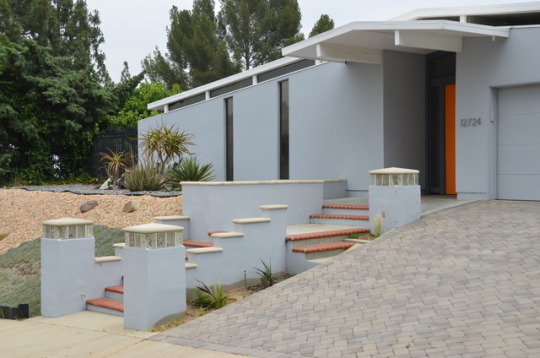
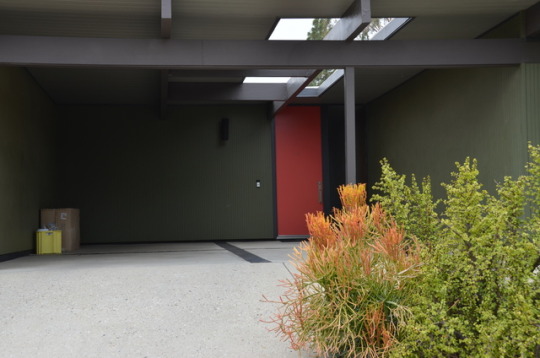
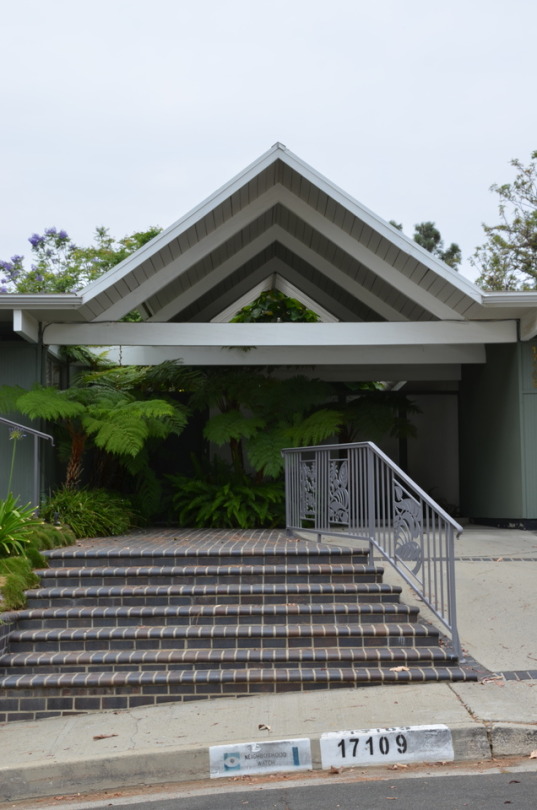
[05.31.17] admittedly, securing sites to visit and enter legally has become much more frustrating than i had originally anticipated. one homeowner had to reschedule, one cancelled on me, and the last (which i knew i likely wouldn’t be able to visit since they typically require reservations for tours three to four months in advance) just completely fell through. though i recognize that these things happen, you might imagine i was still disappointed.
regardless, i decided to spend my first architectural exploration day in los angeles by immersing myself for the whole day in balboa heights - a site that i almost mistakenly included in my itinerary, but which ultimately proved itself as one of the most eye opening parts of this trip so far.
balboa heights was made famous in the late 1960s by josef eichler, an incredible developer and architect who was in complete awe of the effect that frank lloyd wright’s modernism had on its inhabitants. eichler’s contribution to modernism, at least on an urbanism scale, was far different. he focused this neighborhood's 108 midcentury, single-family homes towards middle class families. eichler’s work served as an important precedent for postwar housing at a neighborhood scale, aiming to provide comfortable and familial housing solutions. just as with most case study houses, sliding glass door entrances erased the fine line between indoor and outdoor regions. a choice to adopt and implement economic materials and open floor plans only heightened the impact that this urbanist strategy had on coloring american midcentury modernism. any other background information on this neighborhood can be found here; i found it to be very helpful when i was curating this trip several weeks ago.
balboa heights, simply put, had an incredible impact on me. i thought i was going to see several cookie cutter style homes, and i certainly did. but their attention to detail, as well as their specific integration into and consideration of their contextual landscapes made balboa heights an extremely memorable place for me.
four predominant housing typologies emerge, which are most easily characterized by their roof designs. most common, as you can see, is the ‘a-frame,’ which was also my favorite. at first glance, it echoes the basic archetype that we all so quickly associate ‘home’ with - a pitched roof. upon further inspection, however, i saw so many other affordances of this organizational design. programmatically, for example, the whole house wraps around this central core, giving purpose to the area under the roof as a main entrance into the home. its often open and airy nature allows for natural ventilation - it’s no surprise that so many homeowners use the zones under their pitched roofs not as carparks, but as greenhouses and miniature gardens.
the overall maintenance of the region was also impressive - not only in the fact that everything was kept up well, but also in that most homes were ‘preserved’ even in the inevitable threat of modernization. electric cars were charging from cables and devices installed on the homes. natural vegetation crept inside the units without clear boundaries. some homes had upgraded, renovated glazing - but without destroying the material and color sensibilities of the original designs. all in all, from a preservationist’s perspective, balboa heights could be viewed as a neighborhood frozen in time, which still accommodates for present day, as appropriate. though this is a seemingly simple idea, it is very difficult to find successful instances of, in my opinion. simply put, balboa heights captured the charm of ‘then’ and smartly integrated it with ‘now.’
above all, however, i was amazed by the color palettes of the homes. most of the images i’ve curated attempt to demonstrate this. all of the homes have muted, pastel colors, which echo the large scale vegetation of the neighborhood and mountainous contexts the homes reside in. the tans of the concrete paving slabs take a nod at the far-away rocky landscapes, while the dulled greys, greens, and blues consider the vegetation of the region. any accent colors relate to the local vegetation inherent to that specific house. this motif is in almost every house, and is still upheld, today. bright orange mailboxes and colorful front doors actually make contextual sense when looking at the natural details of the residing contexts. that no residents, for example, have altered their vegetation, is incredible to me. everyone seems in tune to the spirit of their own home, as well as the overall ethos of the neighborhood. the housing strategies prevail in several scales and contexts. how impressive and wonderful to see!
all in all, balboa heights is definitely something i’d like to revisit several years later to chart if it has been able to progress without changing.
tomorrow, i’ll be visiting another case study house, which happens to be for sale. too bad that the realtor denied any requests for me to see the house... i think i’ll just have to go and see what i can do, in person. later in the morning, i’ll be visiting the famous eames house. i’ve been told that i cannot make public any photographs that i take, so i’ll have to come up with a clever way to talk about what i observe. it might be time to whip out the sketchbook and get back to some serious drawing.
2 notes
·
View notes
Photo










[05.30.17] the same gentleman who invited me into his home yesterday advised me to come back and take photographs of his neighbor’s residence - another one of the triad homes. he said that they were out of town but that he had communicated with them and that me photographing their property was fine. i wasn’t allowed to circulate around the home, so i could only get some frontal photographs. from what i was told by bob (remember, i gave him an alias, lolol), the home was highly renovated, though not nearly as much as the third house (which i didn’t even attempt to document, for this very reason). this, in bob’s opinion, stripped the charm from the place. still, it seems that the front “image” of the home is accurate to older photographs. whatever the interior looks like, i am not sure.
the rest of the morning in la jolla was dedicated to visiting none other than louis kahn’s salk institute. i know it’s not a CSH or example of housing, but seriously... why the hell wouldn’t you??? there’s no need to delve deep into this world-famous building - so many qualified people have wrote eloquently on it - but i have to quickly address its brilliant treatment of materials. this non-profit research center exemplified a beautiful integration of teak wood and concrete. symmetry bores me to hell, but the strategic placing of laboratories and designing of the flowing stream that separates the two arrayed buildings is beautiful and balanced. the attention to detail, especially for the sake of running water, is inspiring. the construction methods remain inherent to the final presentation of the concrete, making the process residual in the final product, and lending clarity to how the building was actually constructed.
after the salk institute, i ventured out to long beach. after spending some wonderful time at the coast and dipping my toes into the sand, i took a quick gander at CSH #25, or which is more commonly known as the frank house.
designed by killingsworth, brady, and smith (same people as with the triad houses) in 1961, the frank house was designed for the “typical american family.” it was one of the first case study homes that was actually well-received, helping to prove that the avant-garde could coexist with practicality. much like other CSH, this house pushed experimentation with materiality and kept costs low by leaving rough treatments (much like al beadle’s executive towers that i covered a couple of days ago). the owner of the home never responded to my calls, but that didn’t stop me from snapping a couple of quick pictures along the canal.
i’m not quite sure why, but nothing really spoke out to me about this home. how could it, anyways? i took a couple of dumb photos and moved on, without being able to soak up the site in any academic or research-oriented way. still, i think it might be the ‘feeling’ of the area. this part of long beach is rich. very, very rich. and i suppose that when the original idea of the home was to somewhat stray away from super wealth, i feel a little disappointed. but the market is the market, and any properties that front water ought to rise in value. so who am i to criticize?
as i get closer to los angeles, i’m starting to get really sick and tired by all this traffic. i get that la is famous for traffic, but this is such wasted time. there are SO many cars on the road, and i find myself suffering from constant headaches when i’m in the car. hopefully it’s something i get used to. i’m afraid i may have taken for granted the open road and 75 mph speed limit from phoenix to la jolla. what fun that was, in retrospect.
2 notes
·
View notes
Photo
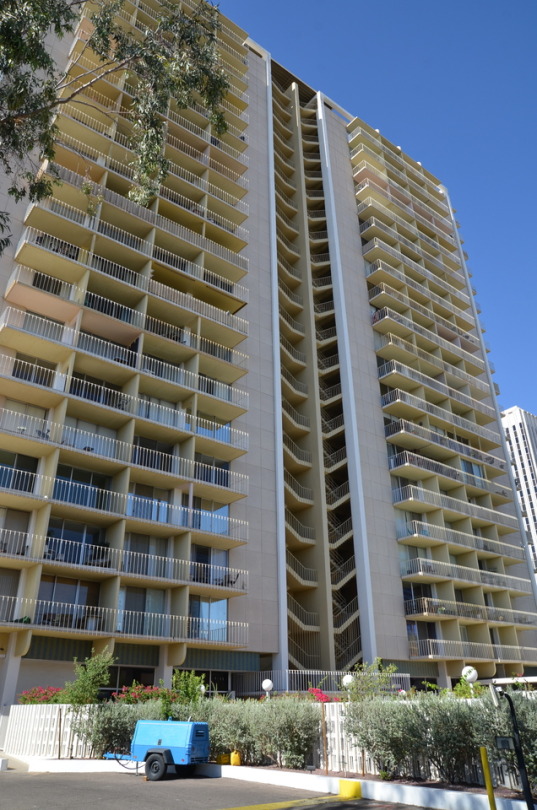
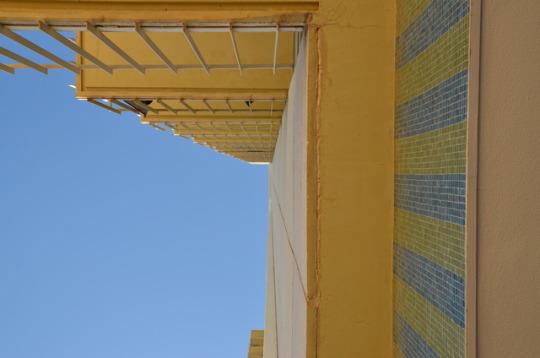
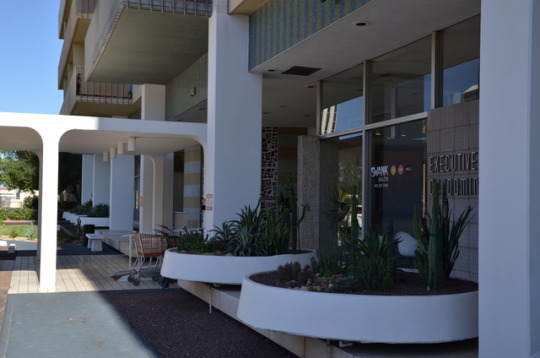
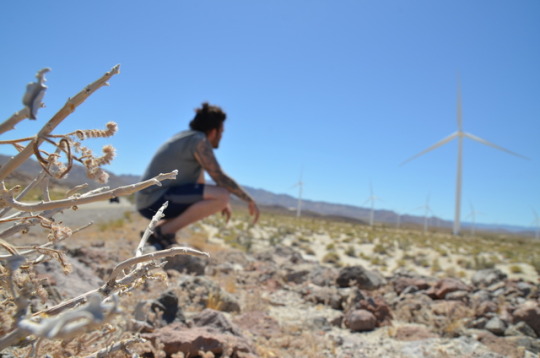
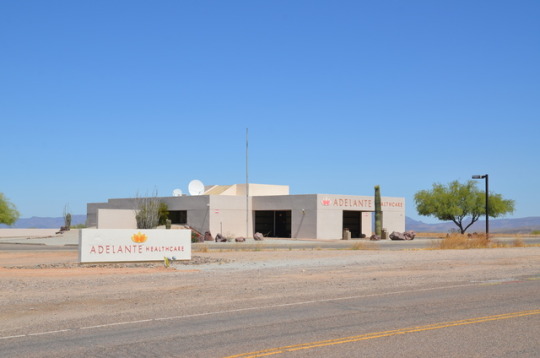
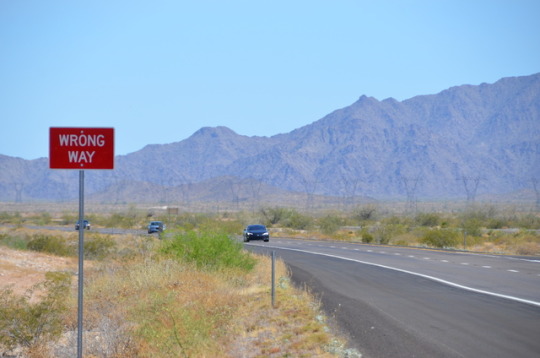
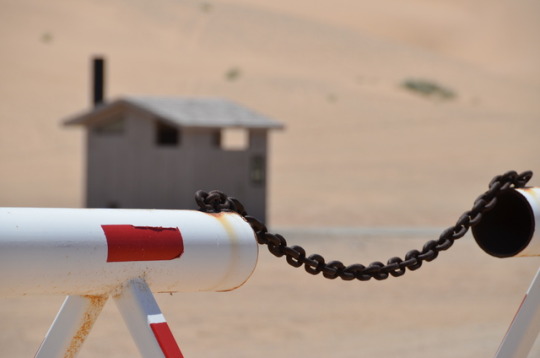
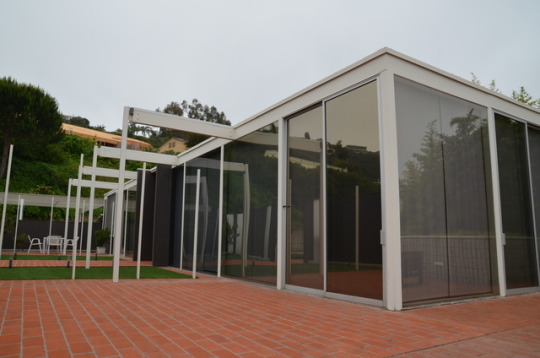
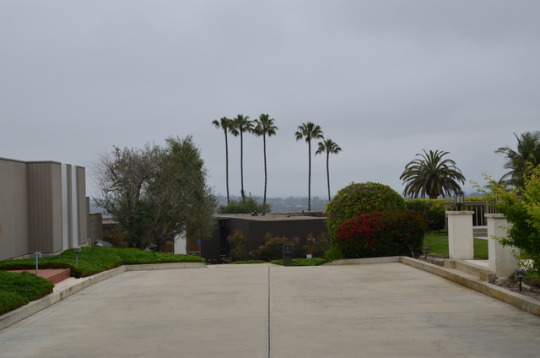
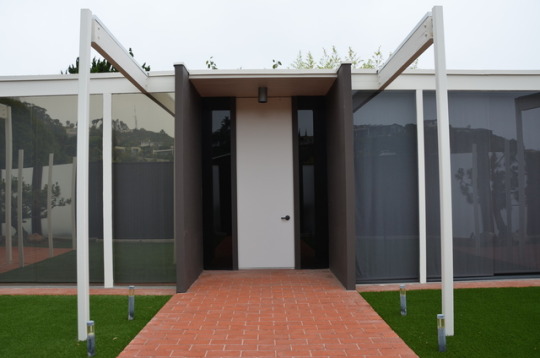
[05.28.17] okay, i know we’ve all seen it in photographs and film: the west coast. the rocks, the dunes, the pacific ocean. but for some reason, the surrealism of this area is astonishing to me. i could get used to this.
i landed in phoenix yesterday morning and immediately picked up my checked bag. the line at budget was 93 people long, so it took me an hour and a half to get to the front of the car rental line.
surprise, sinan! you didn’t ACTUALLY book the rental for a pickup at the airport! HA! at this point i had to take a cab about 17 miles outside of town to some middle-of-nowhere budget agency to pick my car up. a bright red, ugly, nissan on bicycle tires. let’s go.
after organizing the car for a bit, i hit the road. first stop? tacos. i found a little authentic taqueria on some street corner with 75 cent tacos, and had myself a feast. suffering from a post-meal sleepiness, i ventured over to my only site in phoenix - al beadle’s executive towers.
built in 1964, these towers are an example of a midcentruy high-rise focused on middle-class living. with over 160 multi-family apartments, the complex kept its costs low by celebrating rough treatments and exposures of materials. in many ways, the apartments qualified beadle as a primary player in american housing and american identity. beadle was, after all, one of the few american architects interested in melding together affordable housing, mass housing, and modern american identity. the executive towers were something i really wanted to add to my itinerary, since most of the other sites were case study houses or small residences.
though the random residents i had attempted to get in contact with prior to my visit never responded to my inquiries and requests to photograph their units, one elderly couple invited me in after i told them what i was doing while photographing the lobby. i cannot include their images since they requested they be kept private, but i can definitely say that their unit has kept up in time and age. their testimony of the condition of their neighbors’ apartments support this notion, as well.
the rest of the day was dedicated to exploring the city. it was 111 degrees yesterday, so that was no fun. i ended up staying in a $29/night motel. i won’t go into the details, but all i’ll say is that my front door wouldn’t close and i had to jam a chair under the handle.
itching to hit the road this morning and drive out of phoenix, i began the journey to la jolla, california. what should have taken only 6 hours turned into an 8 hour excursion; i couldn’t help but stop every 50 miles or so to snap a couple of pictures. the landscapes along this road were incredible. i just fell in love. it’s amazing how the mountainous landscape so quickly turns into sand dunes.
most gorgeous was the actual descent into la jolla. the road was at an 8% slope for 12 miles. i could literally smell the pacific ocean breeze as i glided into la jolla.
la jolla made its way onto my itinerary in light of its “triad” case study houses. known as the 23rd case study houses, this midcentury communal housing solution was designed and built by killingsworth, brady, and smith in 1960. the site incorporated a shared driveway to challenge the american status quo of segregated lots. designed with children in mind, the rooms which had the most access to the outdoors were those which housed the family children. as such, this triad presented a strong proposal of family and child growth, ingraining itself into american housing strategy like never before.
while residents of two of the homes never responded to my requests for documentation, an wonderful couple that resided in the third welcomed me into their home. for the sake of their SECURITY, i’ll refer to them as bob and susan.
bob met me outside the door and explained how he has meticulously kept the property up to date without infringing on the ethos of the site and design. all he has done is build a perimeter wall. he also had to rid of some landscaping elements within the confines of the site, itself. other than that, all wood, glazing, and metal is original. incredible!
the views afforded by his home were quite interesting. nothing directly looked at the water. everything seemed to be about ‘in-between-ness,’ in that the landscaping heightened vantage points and interstitial zones between homes, surrounding landscape, and roads. the fog and rain was heavy that day, so the air was especially brisk at that mountain altitude.
tomorrow, i plan to quickly visit louis kahn’s salk institute, before heading off to long beach. i know - not an example of midcentury modern housing. i don’t care. it’s the salk institute. i’ve wanted to see this for years! hopefully it will be open for memorial day...
2 notes
·
View notes
Photo






[05.20.17] i’m writing this from minneapolis, thinking back on the incredible visit i had in new orleans with ms. mary frances candies. somehow i managed traveling to, staying in, and soaking up new orleans without taking any architectural shots worthy of uploading. what the hell is wrong with me? maybe it was the legal nonchalance towards drinking in public…
then again, to give me credit, i forgot my dslr with my best friend in pittsburgh. well, forgot is a kind way to put it; TEMPLE STILL HAD IT. anyways, i was lucky enough to borrow a canon 5d (yeah, 5d… woohoo!, and so i decided to spam this entry with some candids involving blueberry margaritas and public intoxication, because, well, new orleans.
that being said, new orleans is gorgeous. i lives and breathes a rhythm that i’ve never before experienced any place else. the colors are vibrant, the music is incredible, and the scenery is so diverse. the personalities that new orleans offers, just like its intense history, is multifaceted and a lot to take in.
it was one of those places where i felt i had so much catching up to do to feel included. you don’t get that feeling in my home-state. minnesota is minnesota: you can join in anytime, and the feeling is the same; oh hai dare, nice to meetchya, would you like some pop?
new orelans, though… something else. it bordered on that line of being too intense… yet it still wasn’t. i could see myself living there and relocating after some time with living somewhere else, but i’m not sure. the french quarter feels a bit too boujee, and i wasn’t too emotionally connected with the suburban life.
i think i’m inevitably a minnesota boy.
jack (my cat: you should familiarize yourself with him and his name if you’re going to read this blog) and i road-tripped back from pittsburgh to minneapolis after i returned. normally, the trip is about 16 hours, and i like to do it in one day without having to burn cash on hotel stays and food, etc. still, considering that jack survived a pretty rough surgery this year, i tend to take things easy on him. he loves travelling, but i don’t want to stress him out. we took our leisurely time and stayed a night, along the way. by the time we made it home to minnesota, he was exhausted. he’s curled up in a tiny ball on my bed as i type this, so i’m sure he feels at home, again. i wish i could bring him to japan!
the next several days have been dedicated to preparing for the west coast end of this trip, as well as the japan leg. that entails a lot of strategic planning (which i’m horrible at) for clothes, luggage, backpacks, etc. part of me wants to just sport a drybag with 5 tshirts and a pair of shorts, but i know i’ll probably die. i hate shopping; it stresses me out. still, the next couple of REI/dick’s sporting goods/MOA visits should come up with something interesting.
i will admit, i’m stressed. i hate that i’m stressed. why should i be??? the next several months are a godsend. i guess it’s that i’ve always wanted to go to iceland and japan - dream locations and countries - and i only thought i’d be able to go as an adult (with a full time job… 24 by no means is adulthood, especially how i’m living it). well, now that i have the financial opportunity to execute something like this, i want to get it just right. lots of planning, lots of pre-expenses. applying to credit cards. frequent flier miles. doctor’s visits.
by the next time i write, i’ll likely be in phoenix. i hope i’ve pulled myself together by then. the scale of this summer’s endeavors has recently started to settle. don’t get me wrong; i’m lucky as hell. but with this luck comes an underlying expectation from others that i’m going to do incredible things. i just hope i don’t let anyone down. does that make any sense? i think i’m thinking too hard.
1 note
·
View note
Photo


[05.12.17] i’m sitting in pittsburgh at the onset of this summer, thinking about the craziness that’s about to begin.
i’m lucky enough to travel to some pretty incredible places this summer. while my domestic travels interest themselves in american midcentury modernism, my time abroad intensely focuses on background research for my thesis next year. all in all, i’ll be taking tours of the united states, japan, and iceland. my breakdown is as follows:
united states: new orleans, boston, minneapolis, phoenix, la jolla, san diego, long beach, los angeles, orinda, sacramento
many american citizens criticized midcentury modern architecture’s unapproachability in cost and selective representation of only a sub-culture of america. i am deeply interested in instances of midcentury modern architecture which do take a stance at bridging societal, economic, and cultural gaps. i have carefully chosen a list of sites which mostly adhere to the famous case study houses, but also include other odd-balls, all of which push an american architectural identity while promoting an economic and societal feasibility that is approachable by the average american.
japan: tokyo, yokohama, hamamatsu, tottori, suzuka, kyoto, nagoya
japan still upholds a world standard for mycelium cultivation, processing, research, and advancement in technology. the country takes a professional, multidimensional approach at researching mycelium methods, continuously pushing mycelium’s role in trade regulations, shipping, processing, agriculture, and academia. my time in Japan would allow me to study the rather avant-garde cultivation techniques emerging out of japan to later embed them within the agenda of my thesis.
iceland: reykjavik, ísafjörður, keflavík, kópavogur
though iceland, like japan, is bravely testing the capabilities of mycelium and fungus, its climate is ironically ill-suited for mushroom harvesting. if anything, however, Iceland’s poor fungus growing climates serve as the perfect case study for understanding the aesthetic possibilities of mycelium. while Japan benefits from its potent soils to reach empirical conclusions, icelandic researchers can take inspiration from their splendorous landscapes to advance the aesthetics behind mycelium. together, the work spurring from both countries presents richness in approach, heightening its relevance to my thesis.
these travels are all thanks to three undergraduate traveling scholarship awards from carnegie mellon university’s school of architecture. it is with this money, which was so generously donated to me by three donors in particular, that i will be able to execute this summer’s travels. to all three of you, as well as all of the individuals involved in awarding me this money - thank you from the bottom of my heart.
now that a summer’s worth of cat food has been purchased for my cat, join me throughout this privileged insanity via this blog, and please, reach out! send questions, concerns, and advise my way. let’s start a conversation!
1 note
·
View note